Rob Fissmer and Elise Loehnen’s home, which is the Vitsoe west coast apartment, spans three floors, open and air-filled spaces, and merely blocks away from the Pacific Ocean. Once a center for the American Beat generation and vagabonds, Venice is now a blend of tiny, windswept beach bungalows next to multi-million monolithic modern structures of glass and cement. Elise, who spent many years working in magazines, such as Lucky, Time Out New York, Conde Nast Traveler, moved to Los Angeles for the Editor-in-chief position at Beso, an online site dedicated to shopping. Rob, who studied architecture, heads up the American division of Vitsoe, focusing on the Dieter Rams’ iconic 606 Universal Shelving System.
While in conversation, Elise admitted to “collecting random stuff.” She gave a tour of her home, in which she showed a hand-painted sign with the text, “SLOW.” The sign was made by her grandmother, a commercial sign painter for a ski area in Montana. On the opposite wall Rob and Elise revealed their wedding program, designed by Nicolas Felton (Feltron), who inspired Facebook’s new “timeline” layout. Downstairs, Rob disclosed his prized collection that included early Dieter Rams’ Braun equipment from the late 60’s and early 70’s, that he scored from eBay finds, and a Braun calculator he picked up while working at Moss, the late iconic design store in New York City.
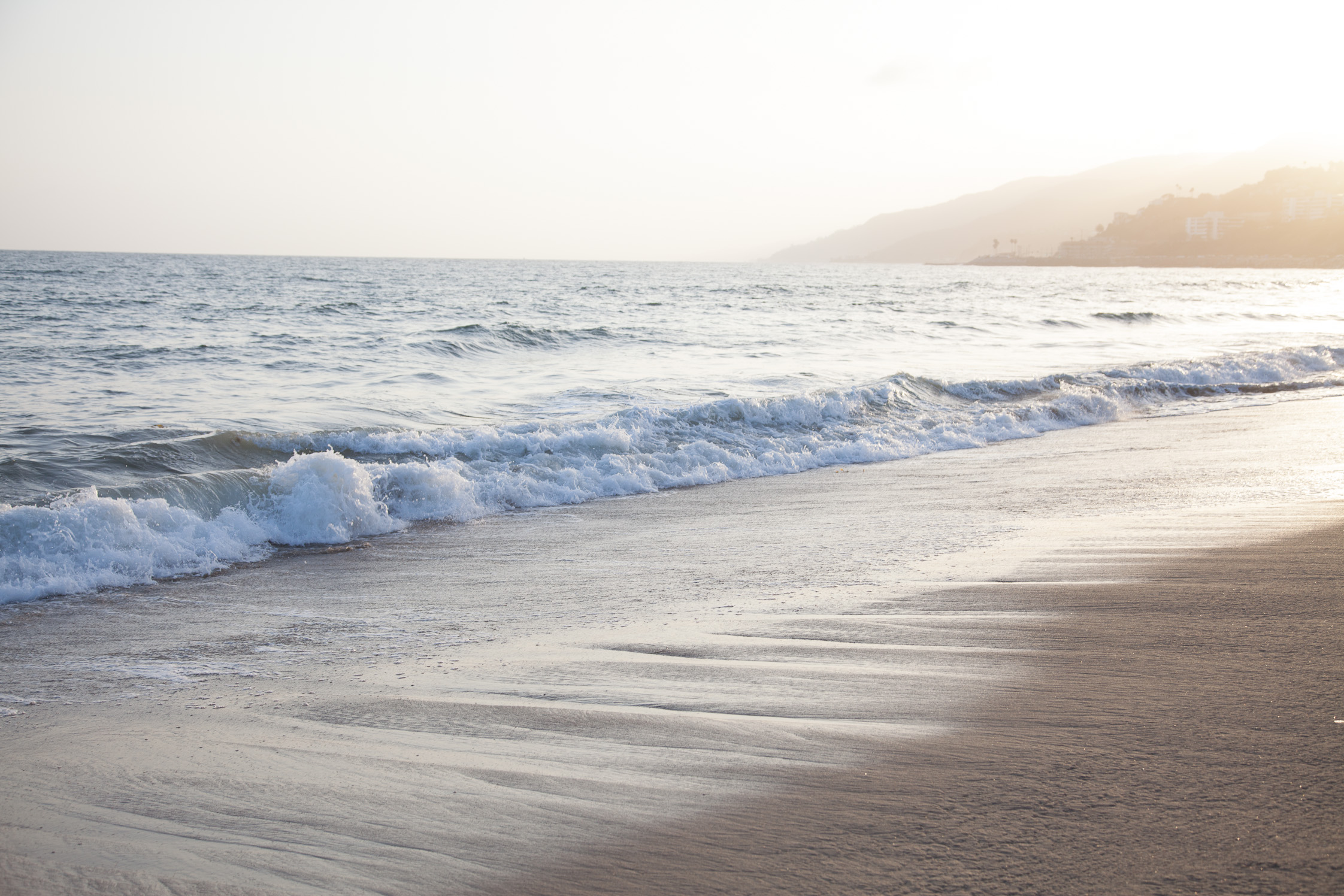
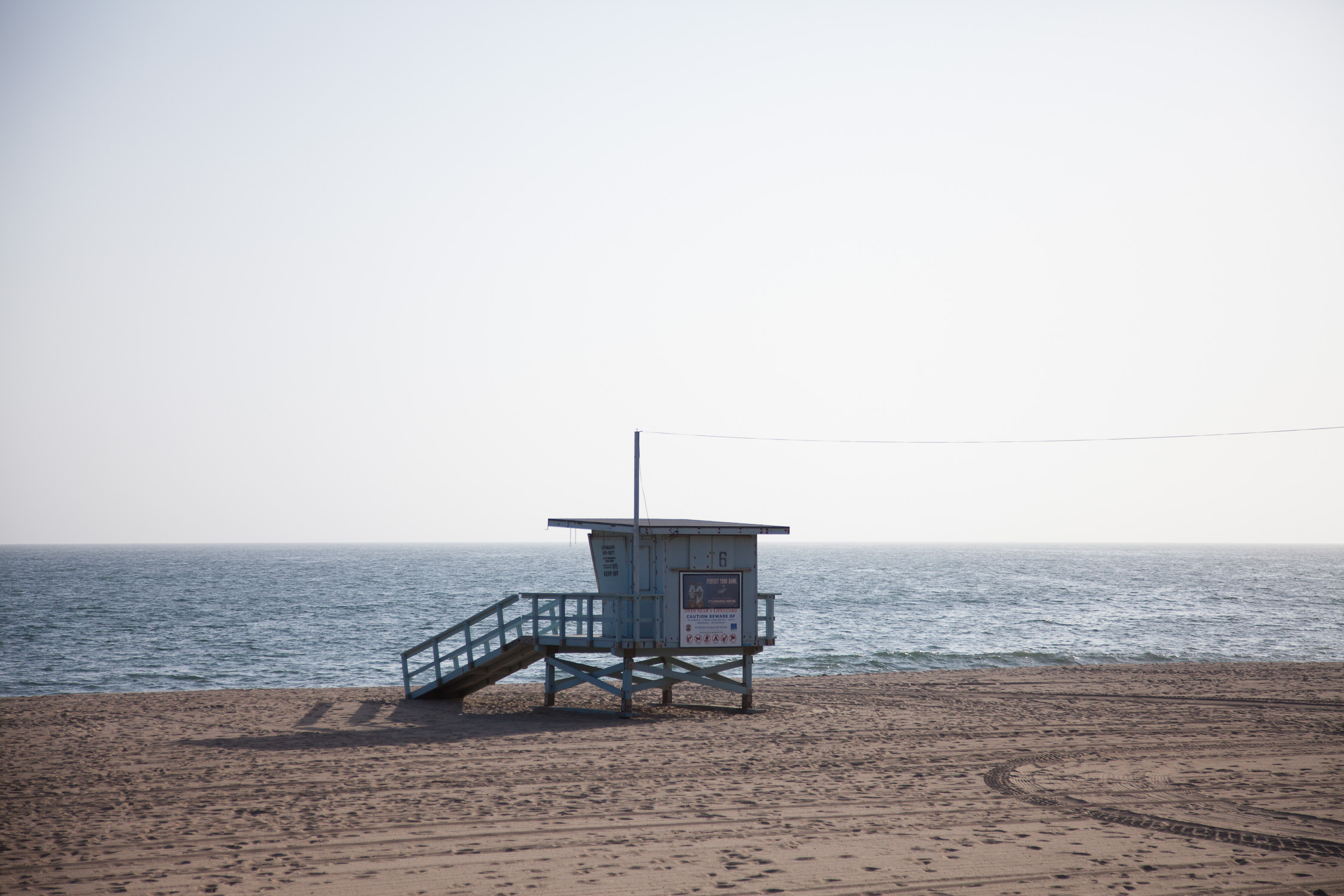
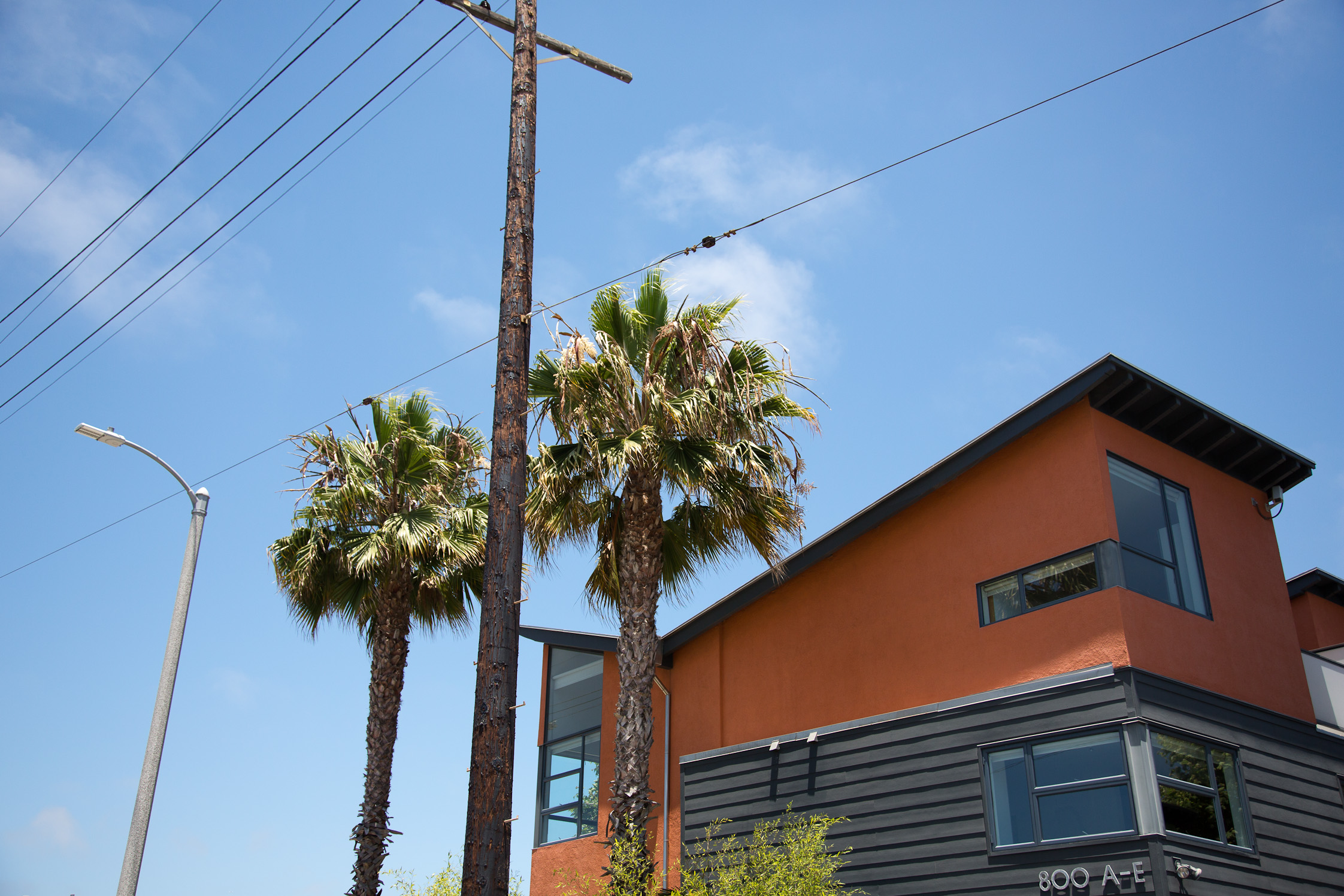
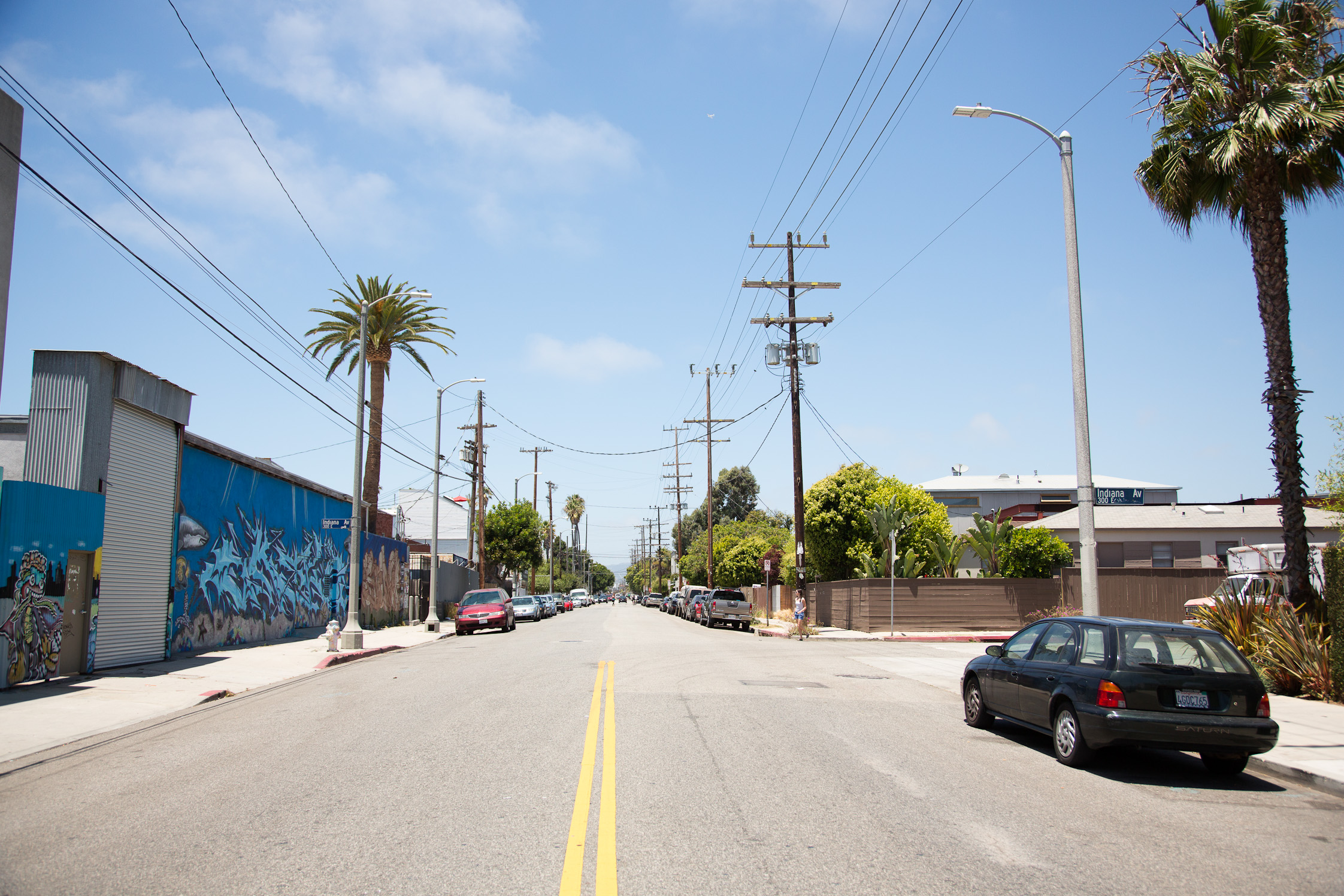
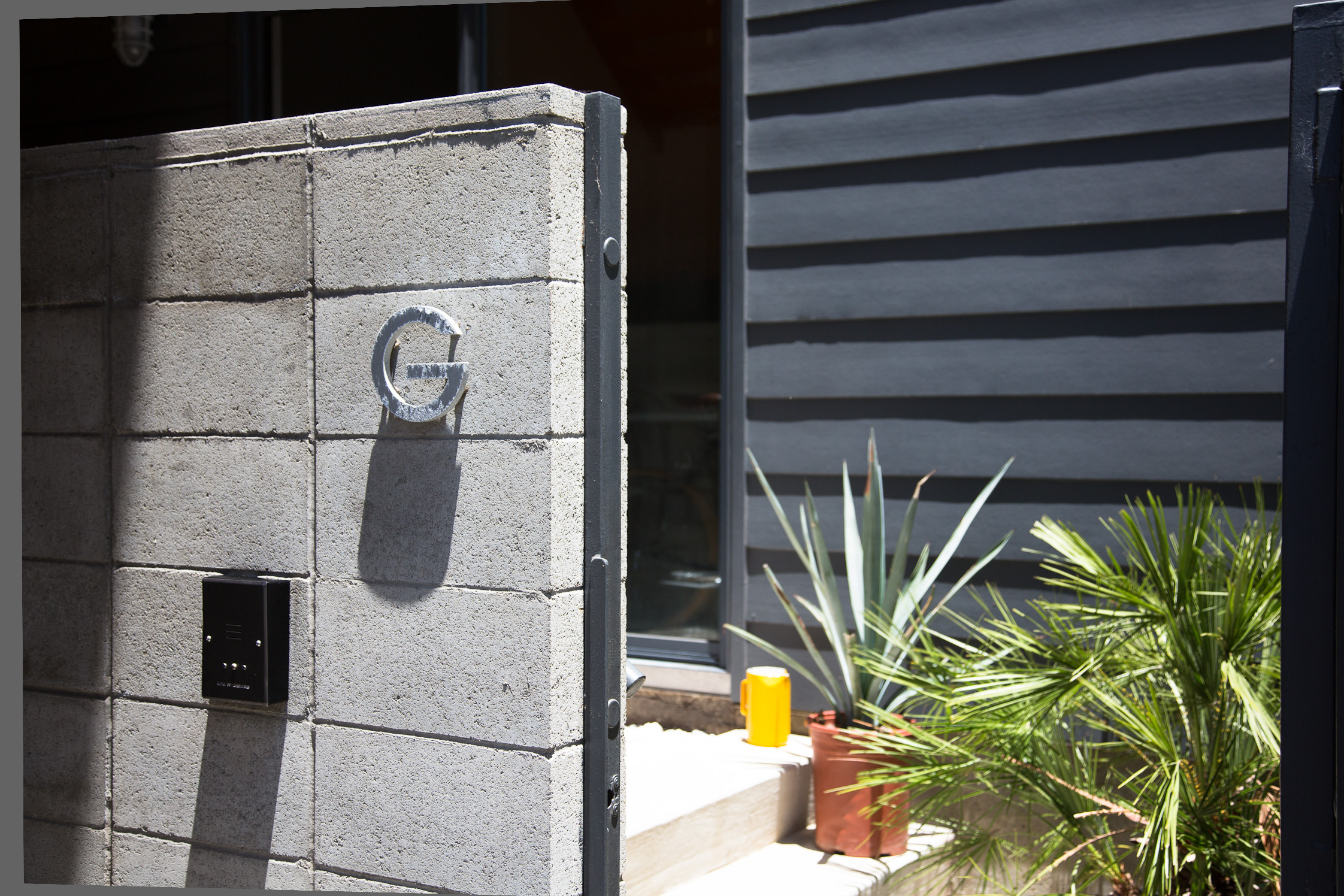
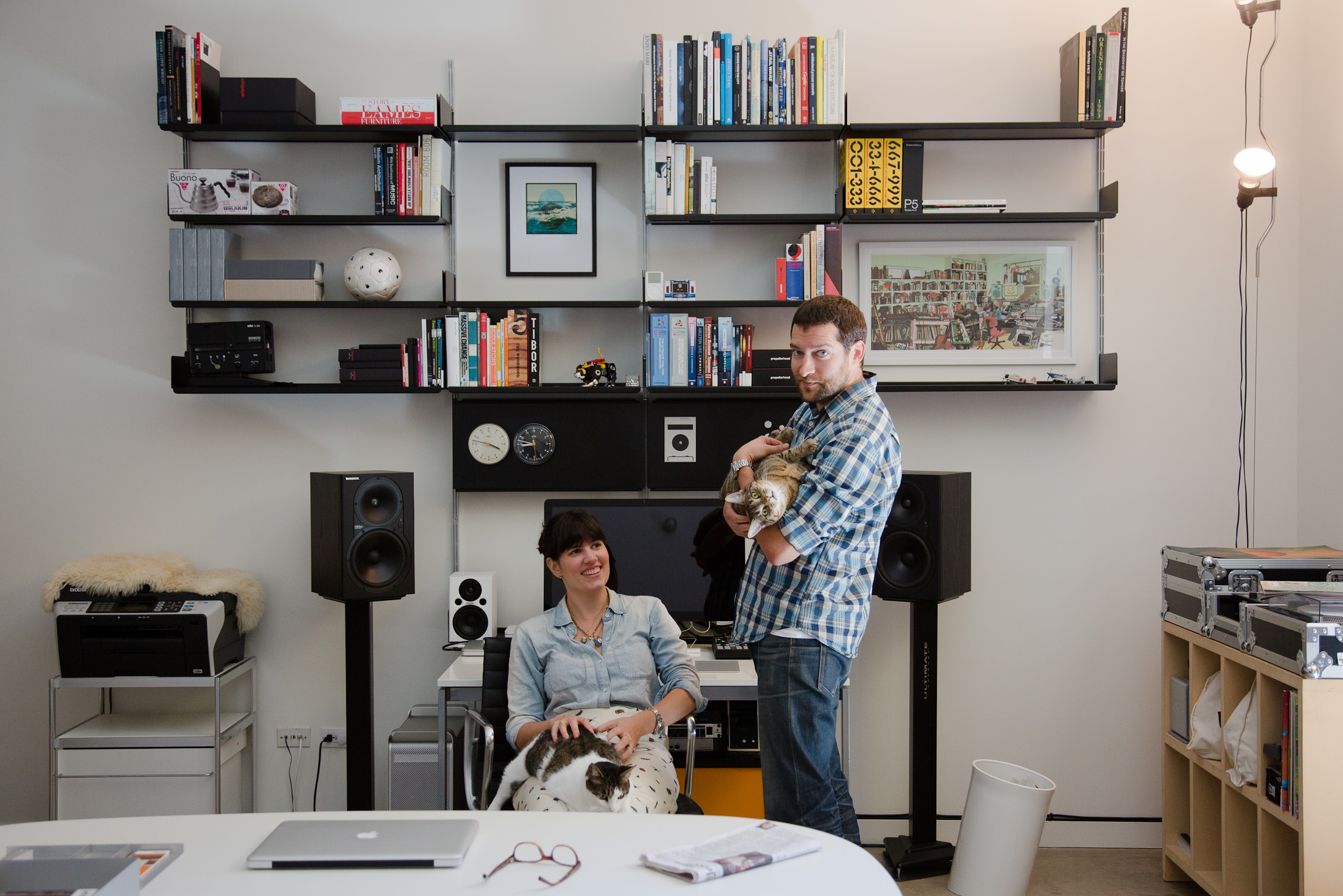
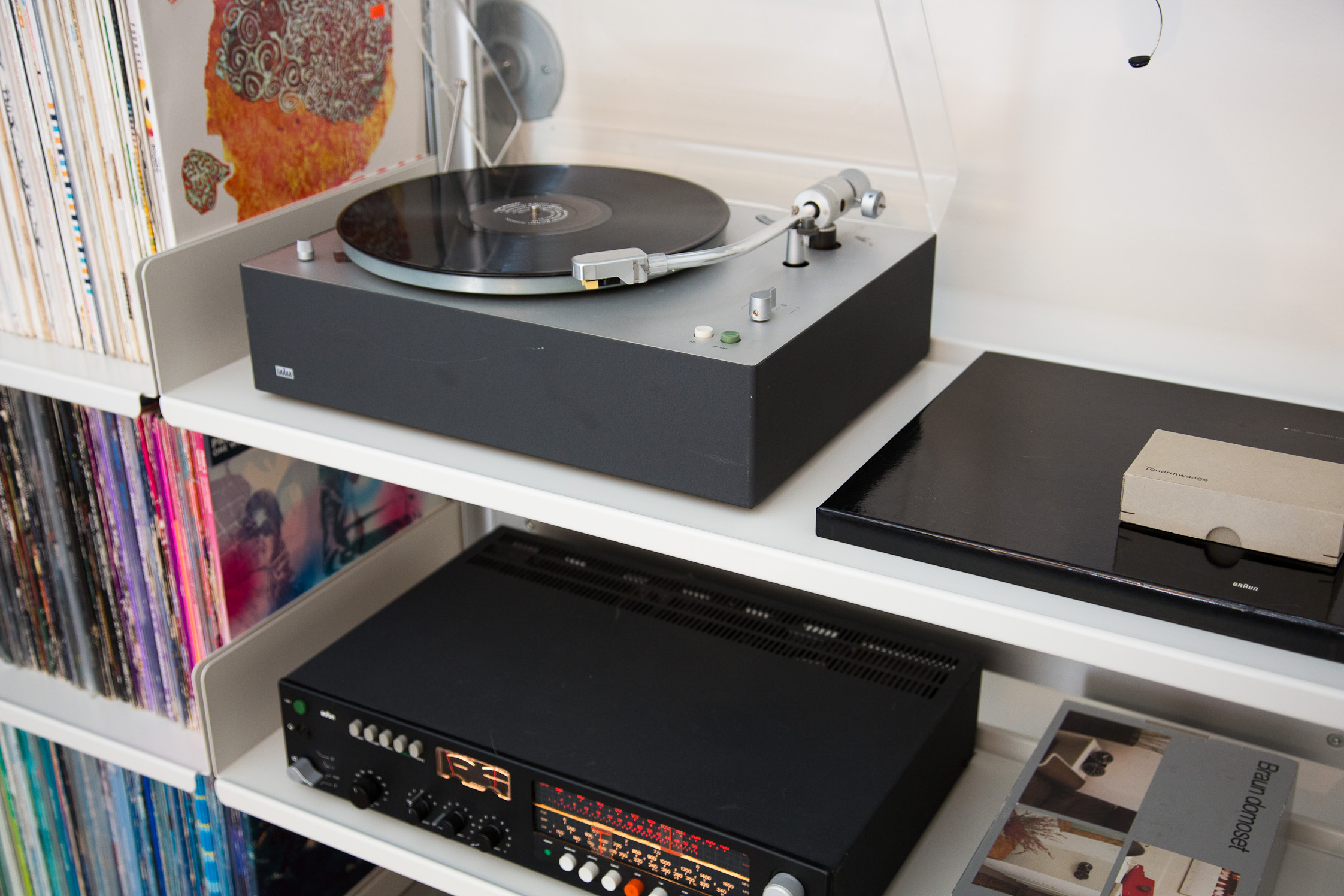
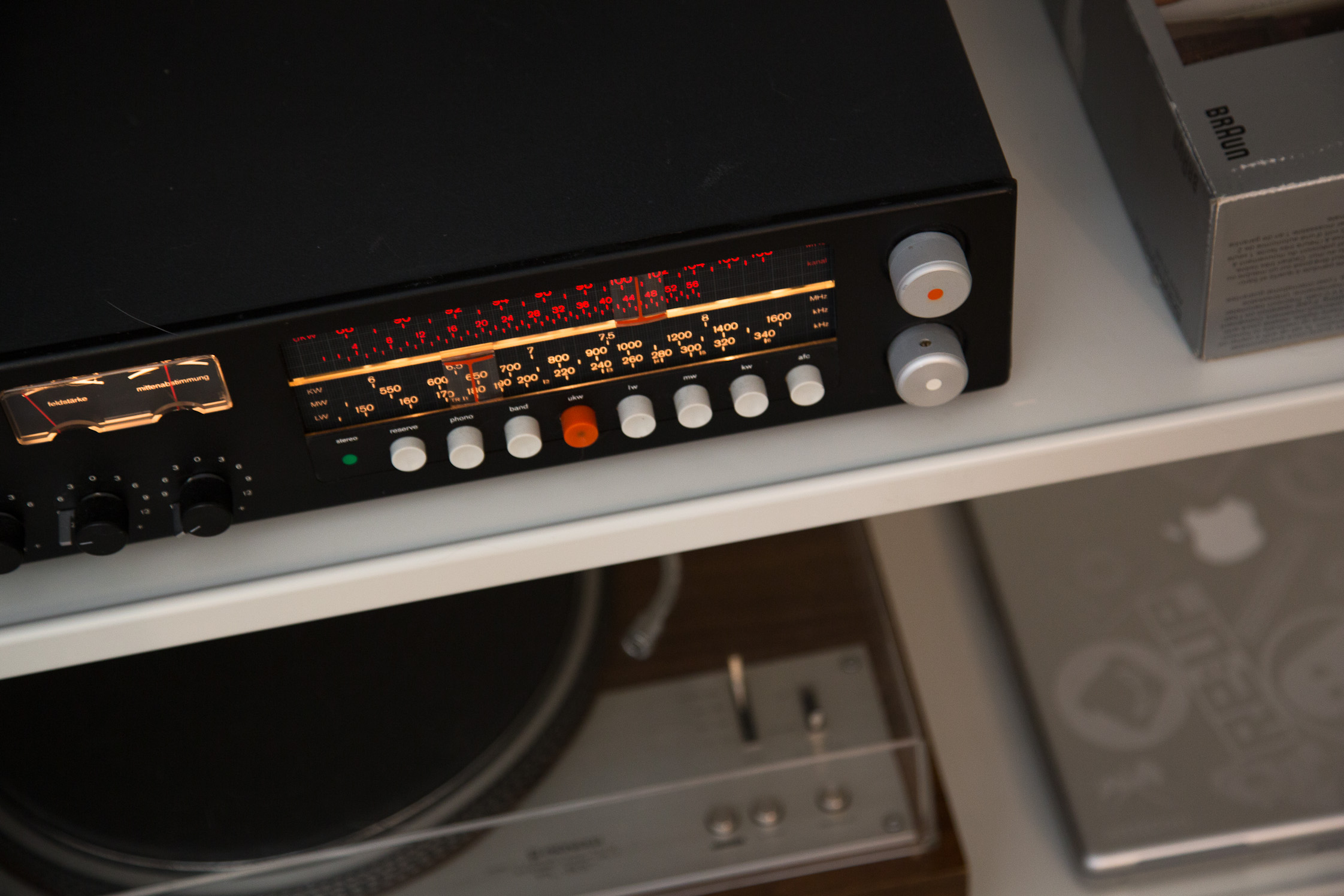
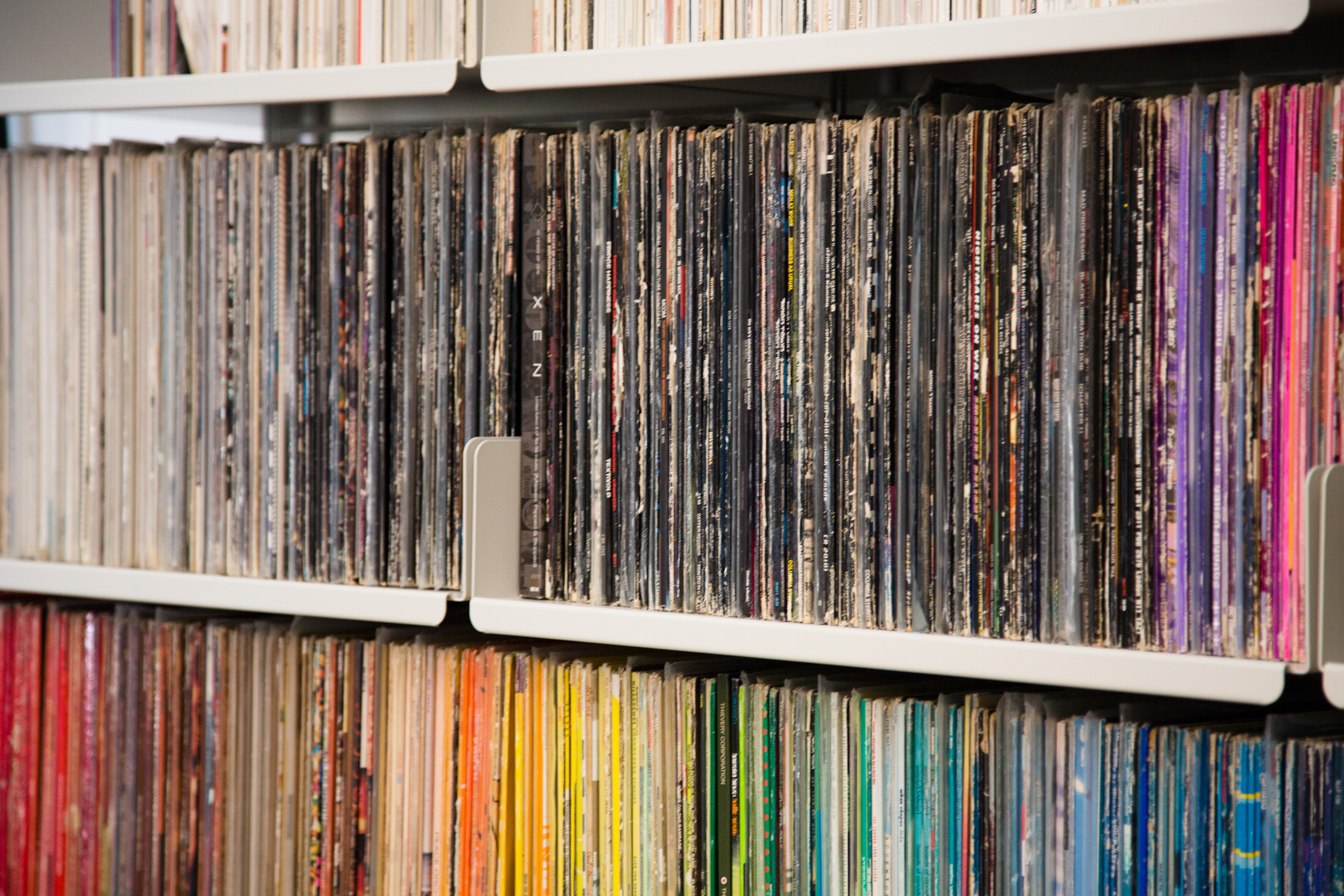
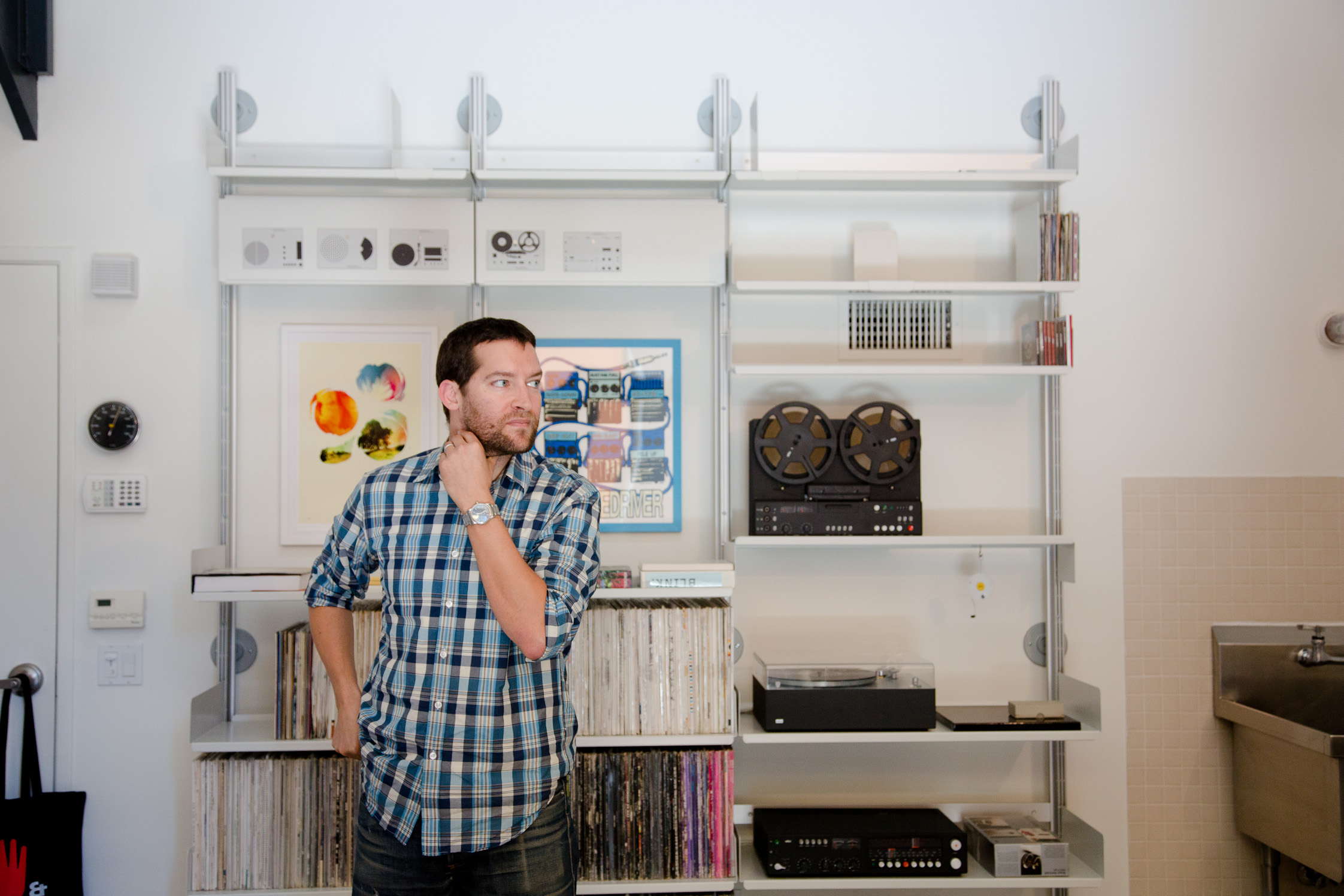
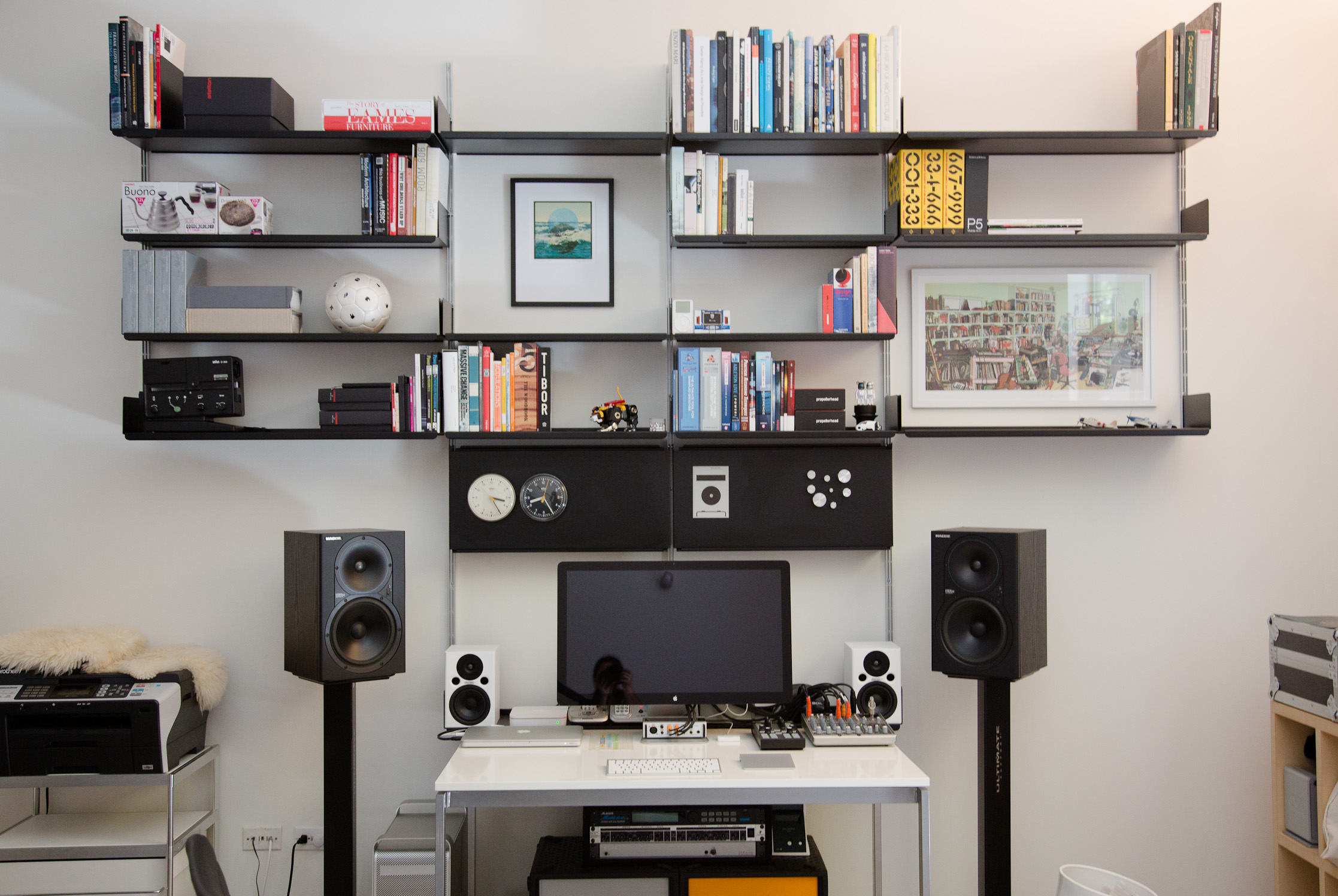
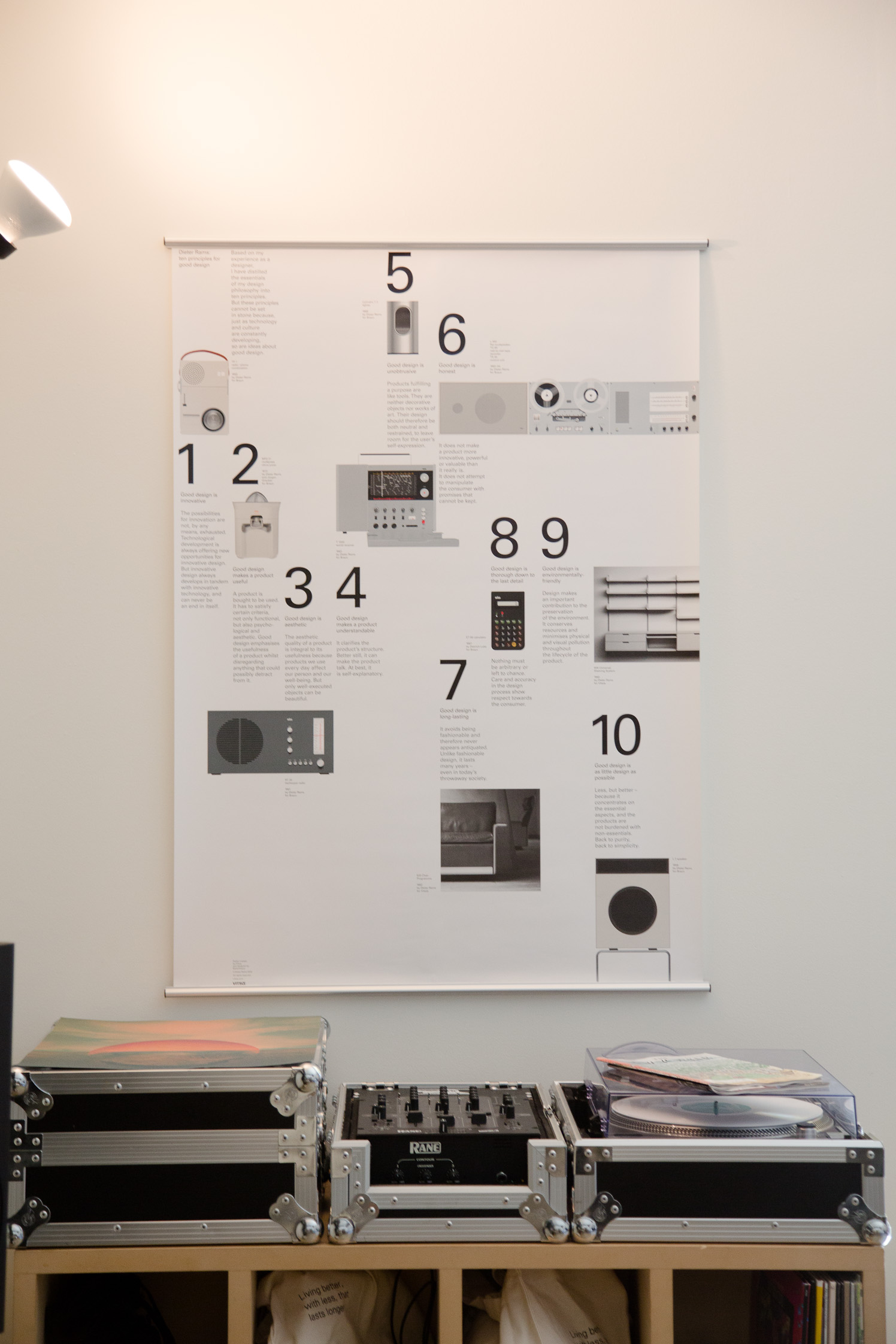
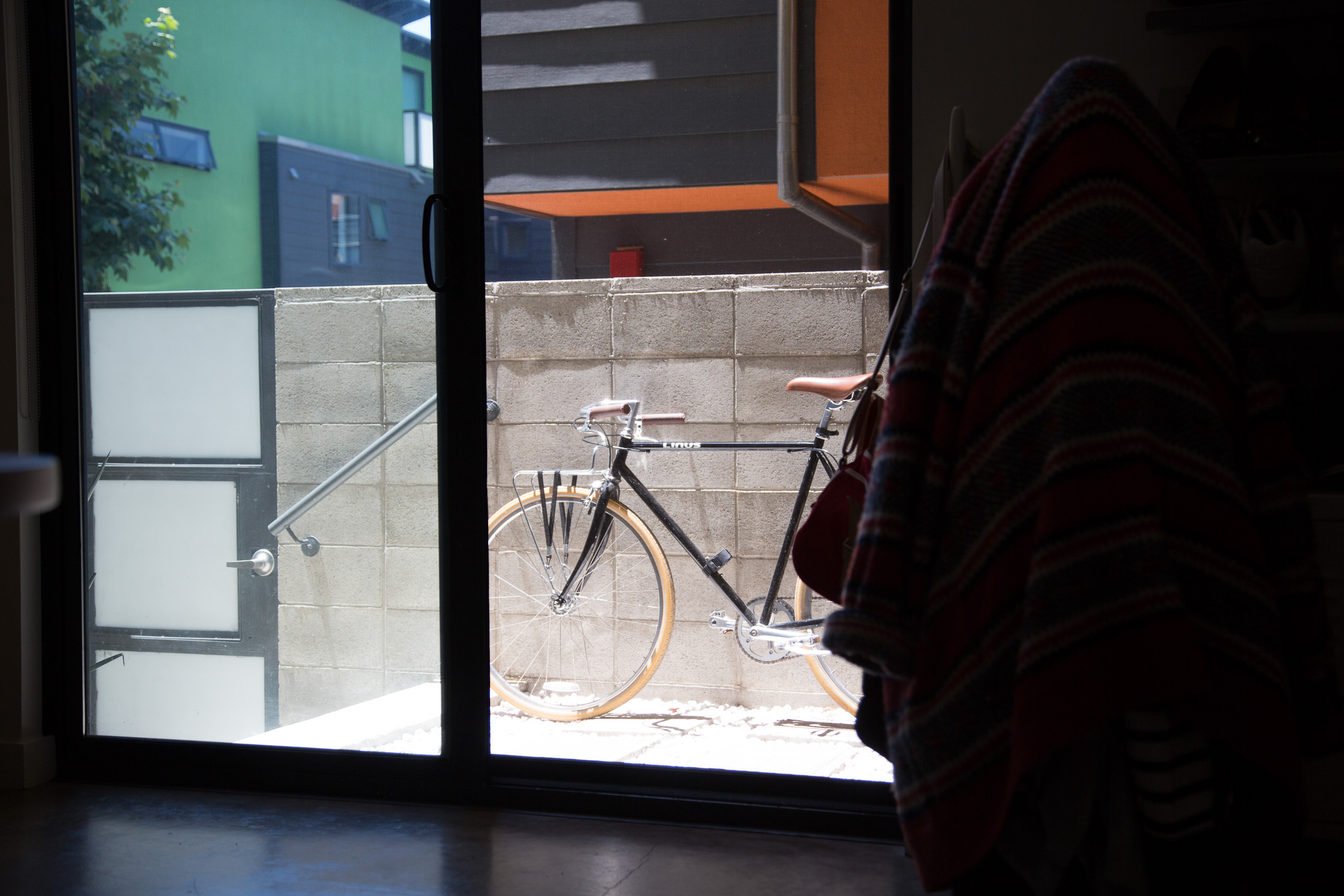
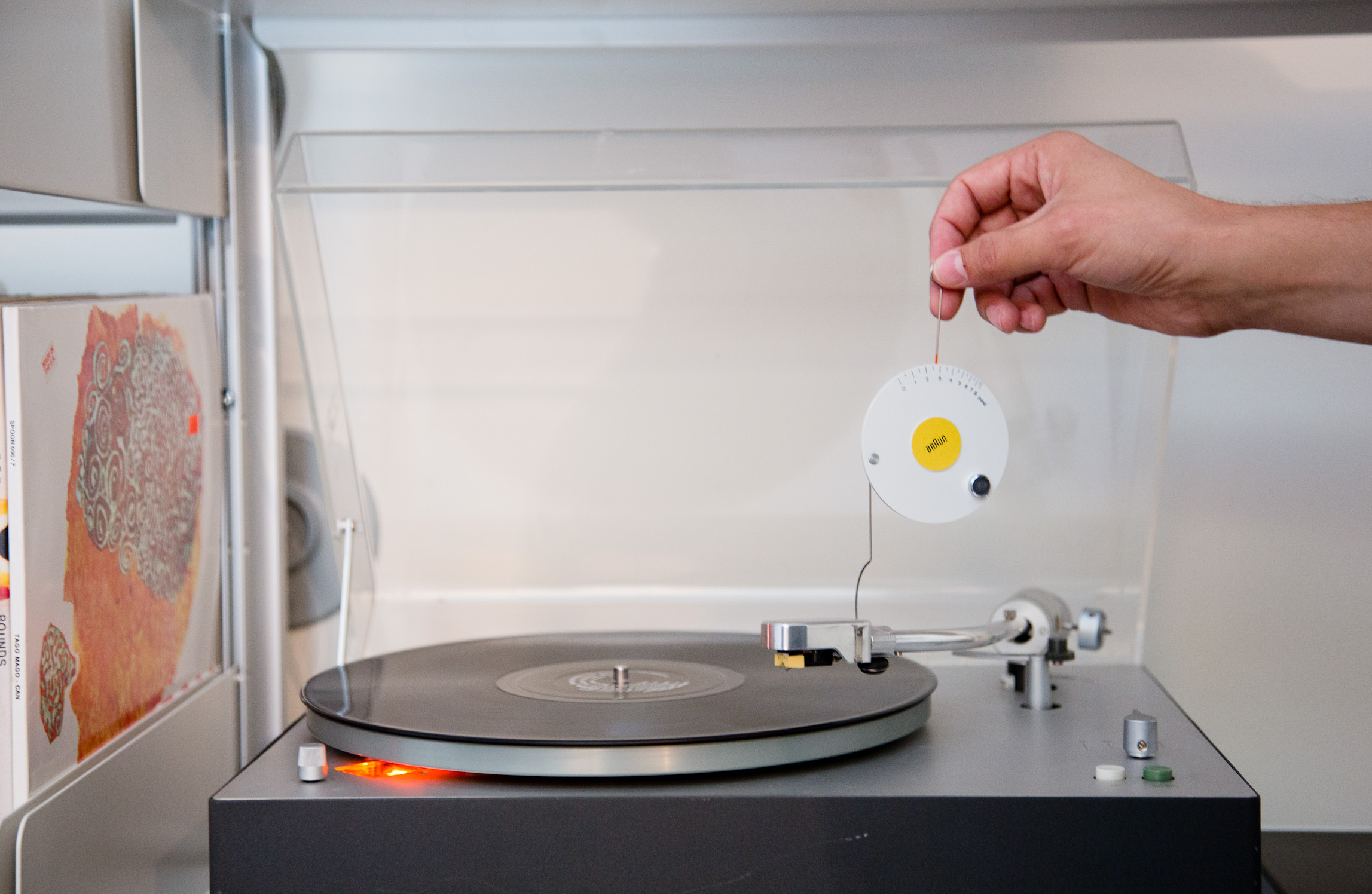
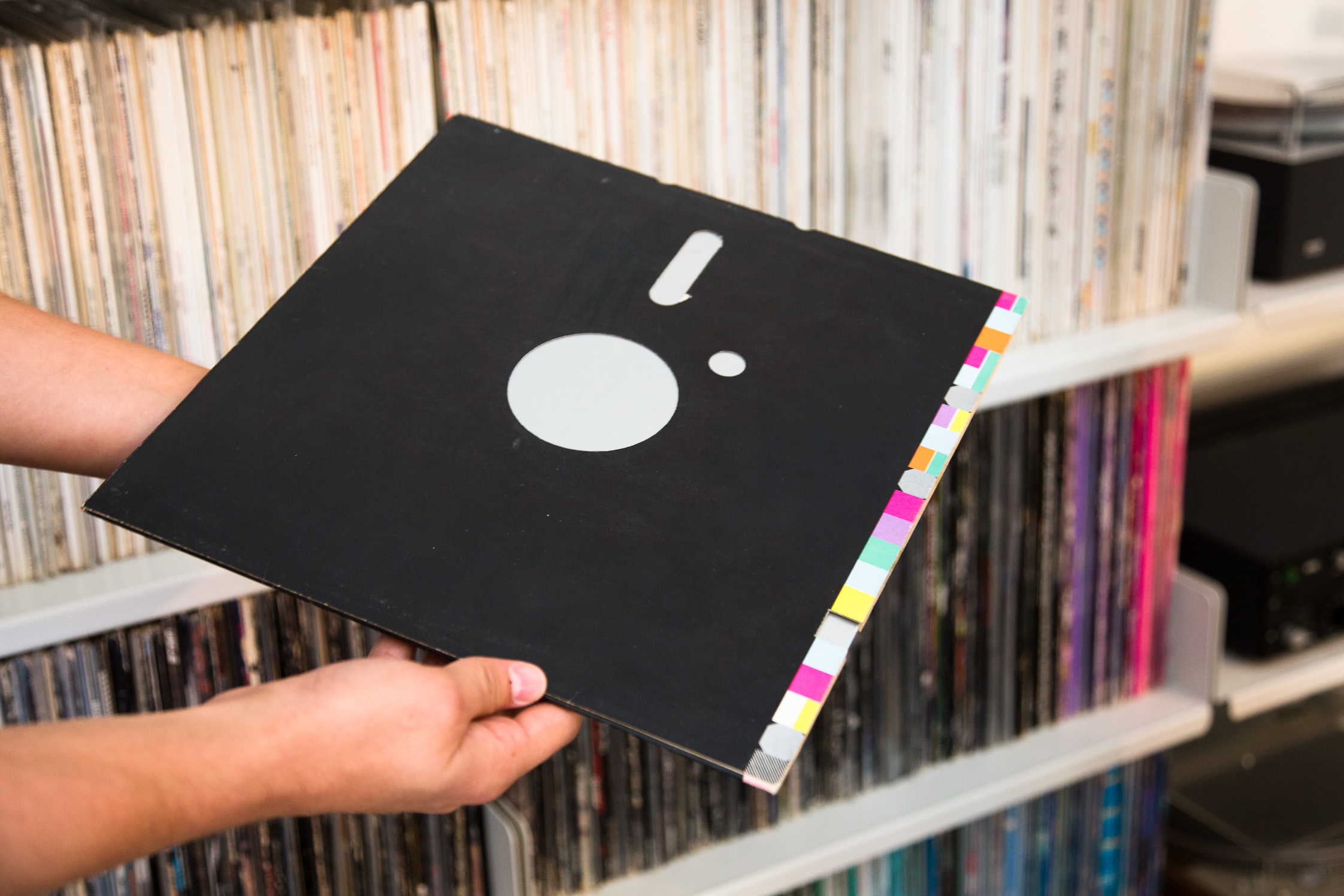
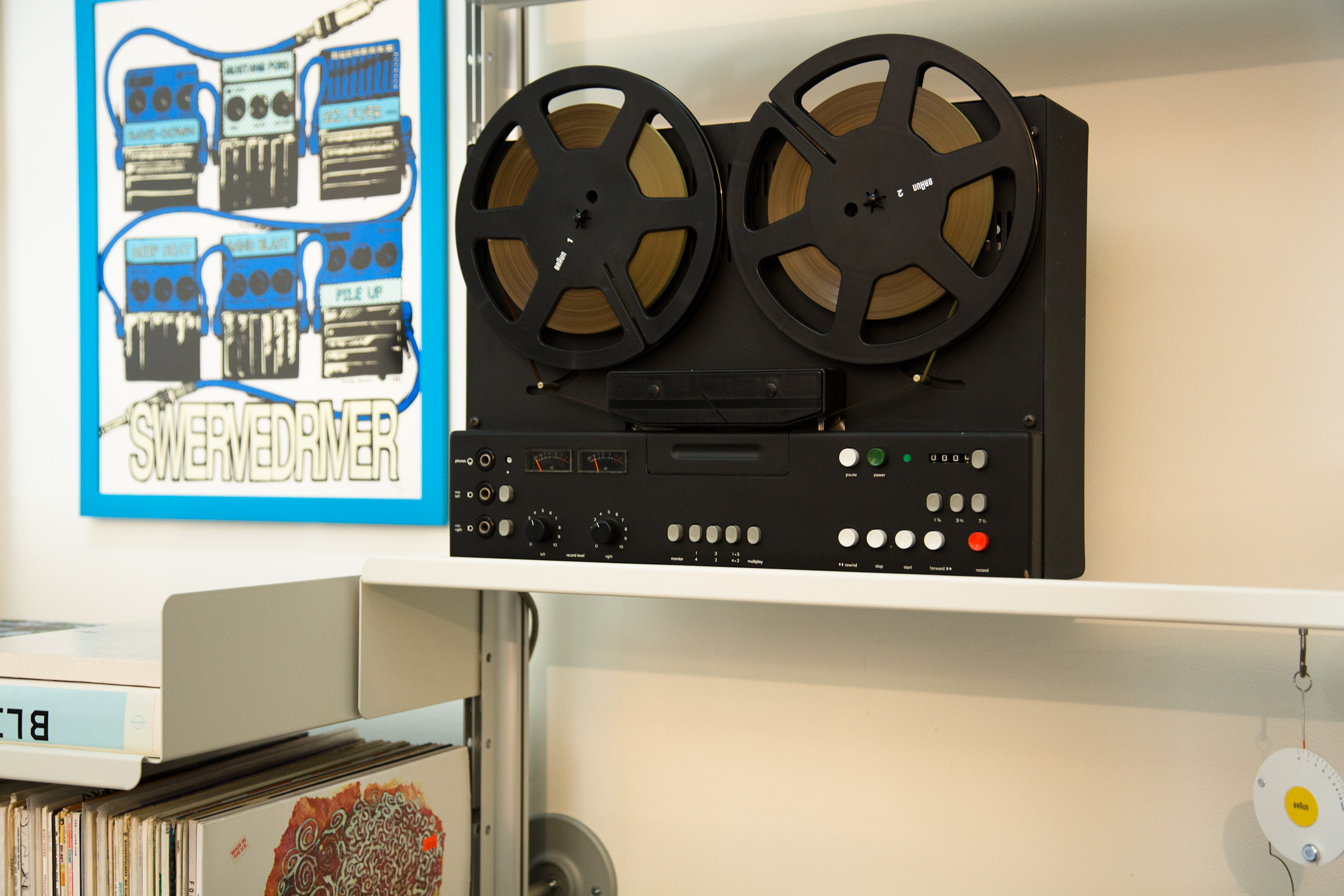
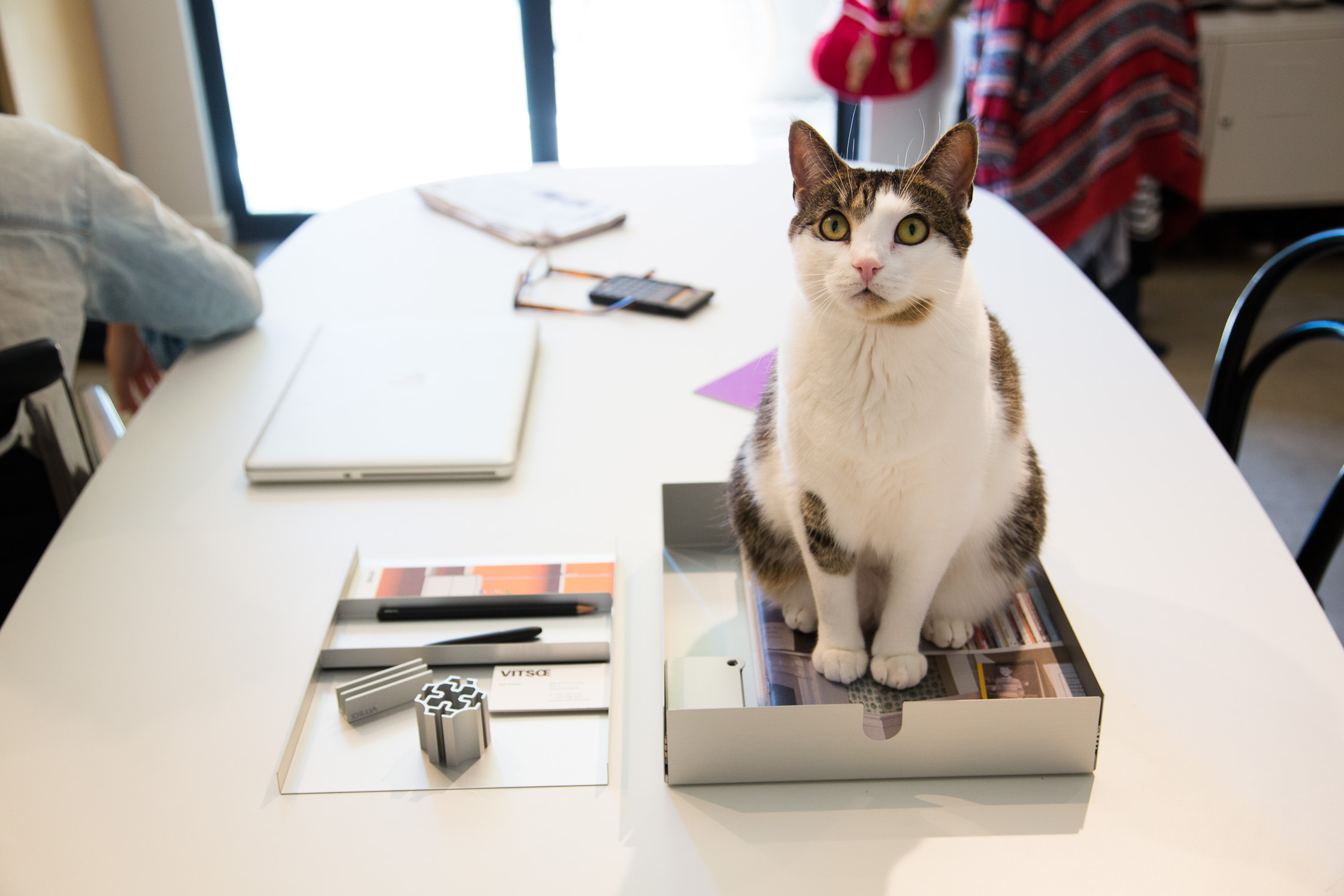
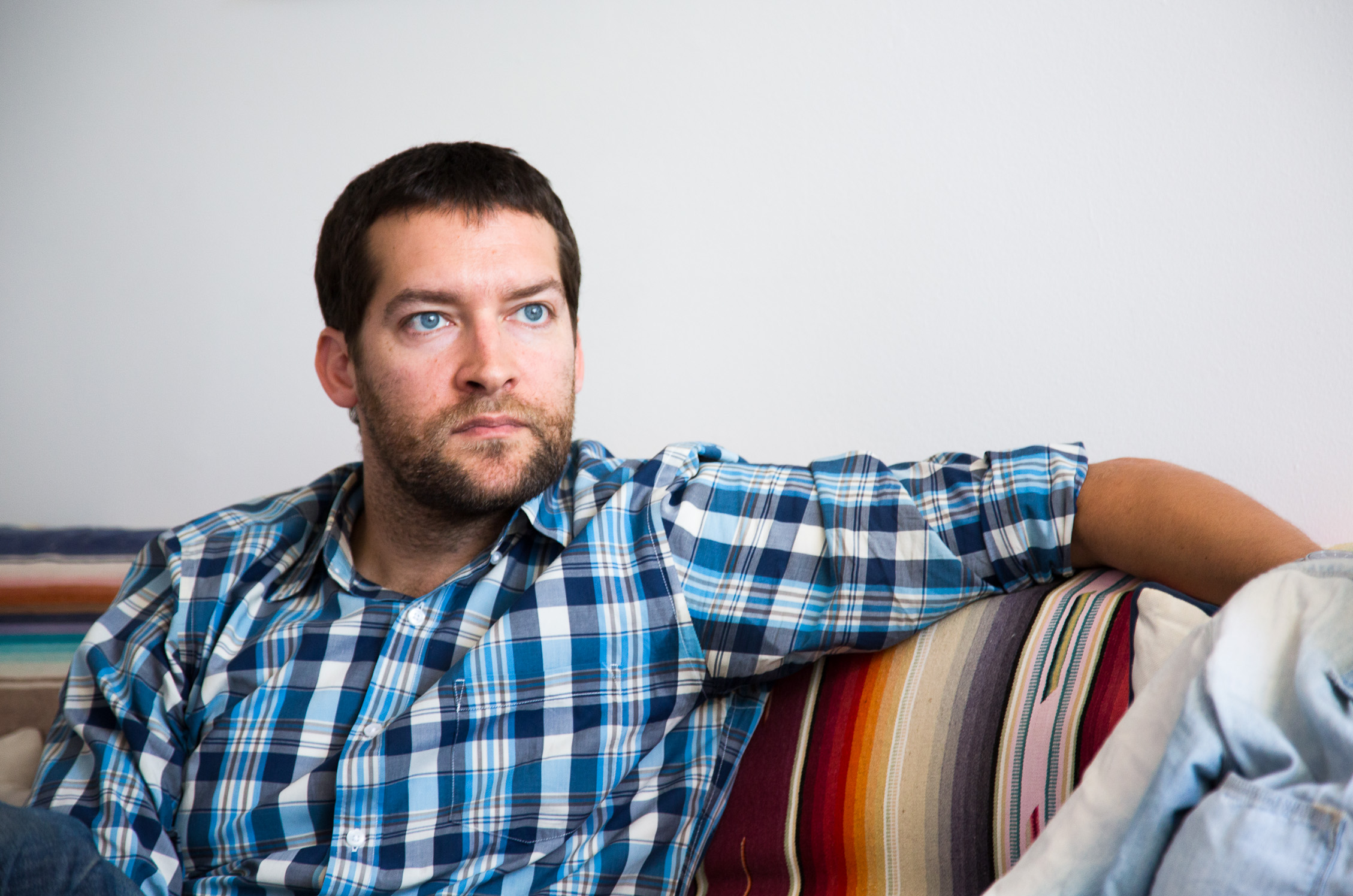

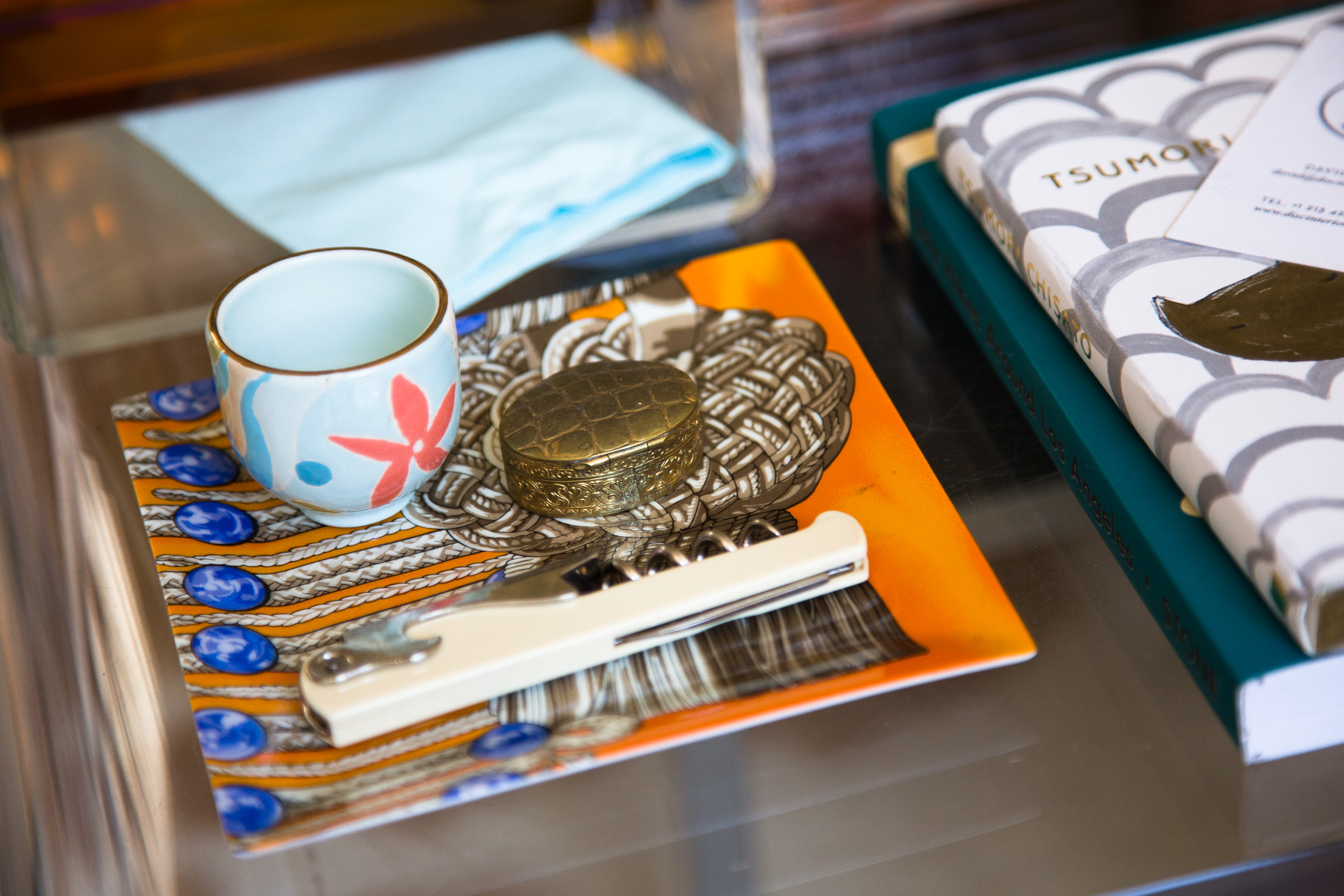
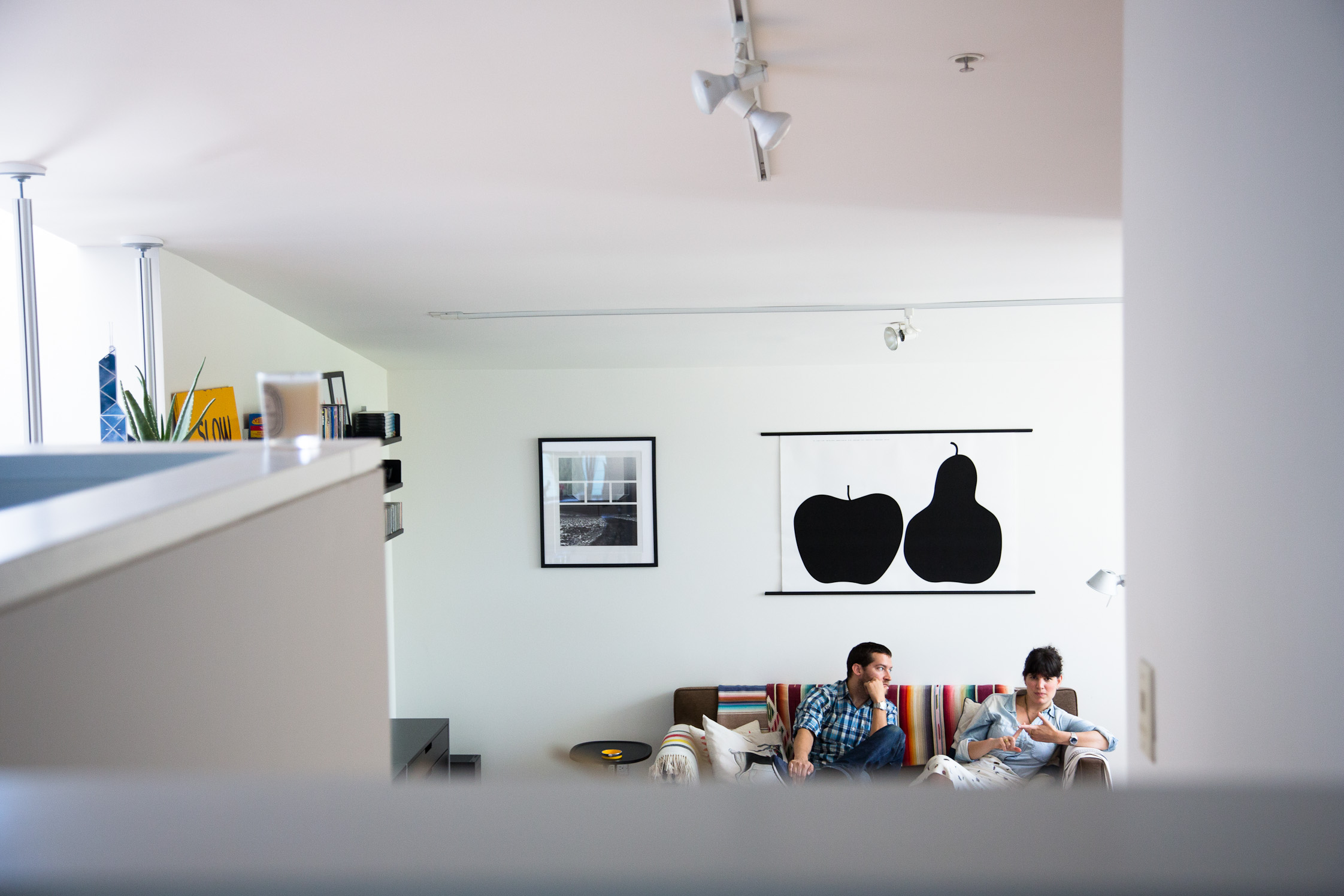
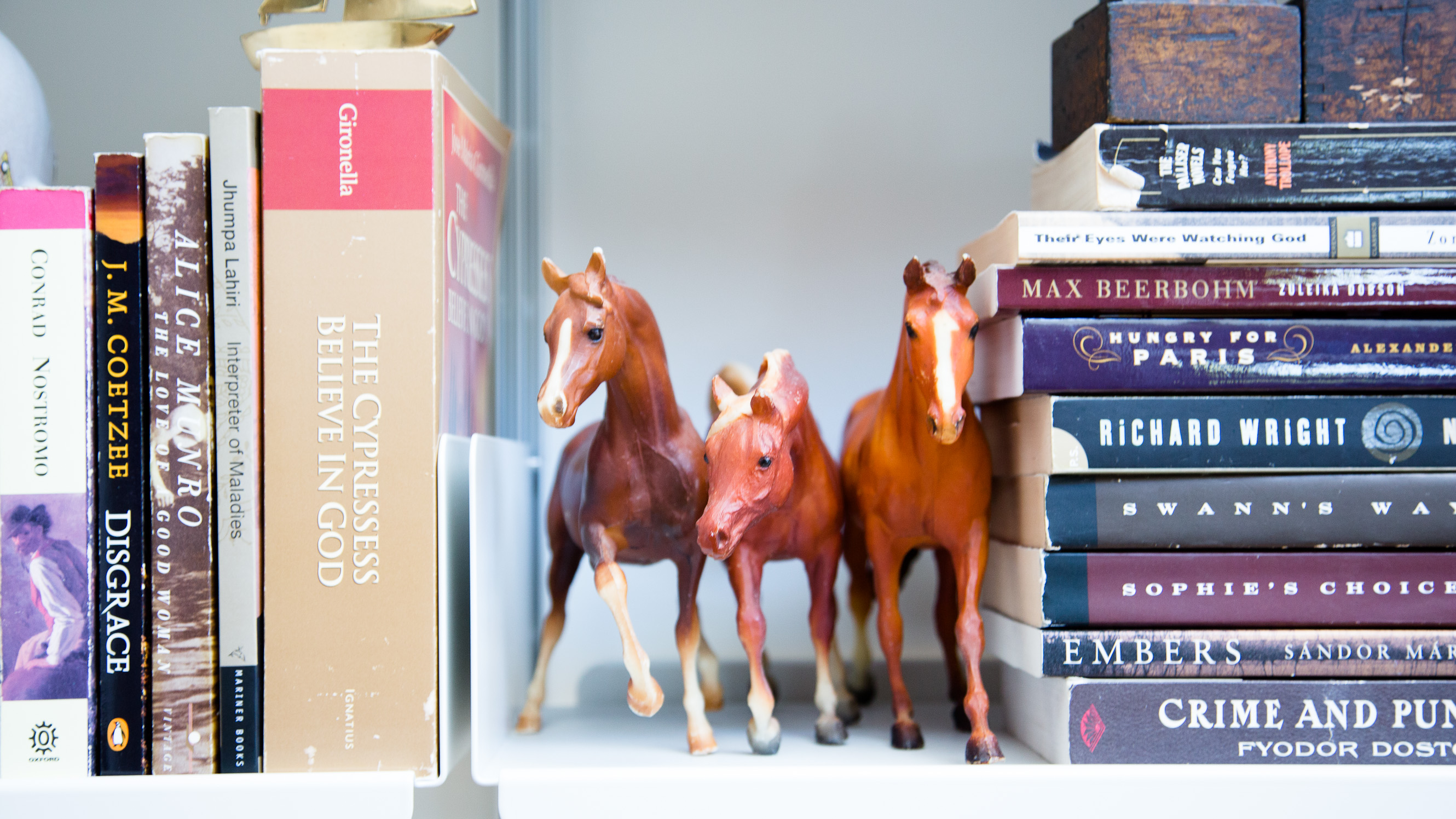
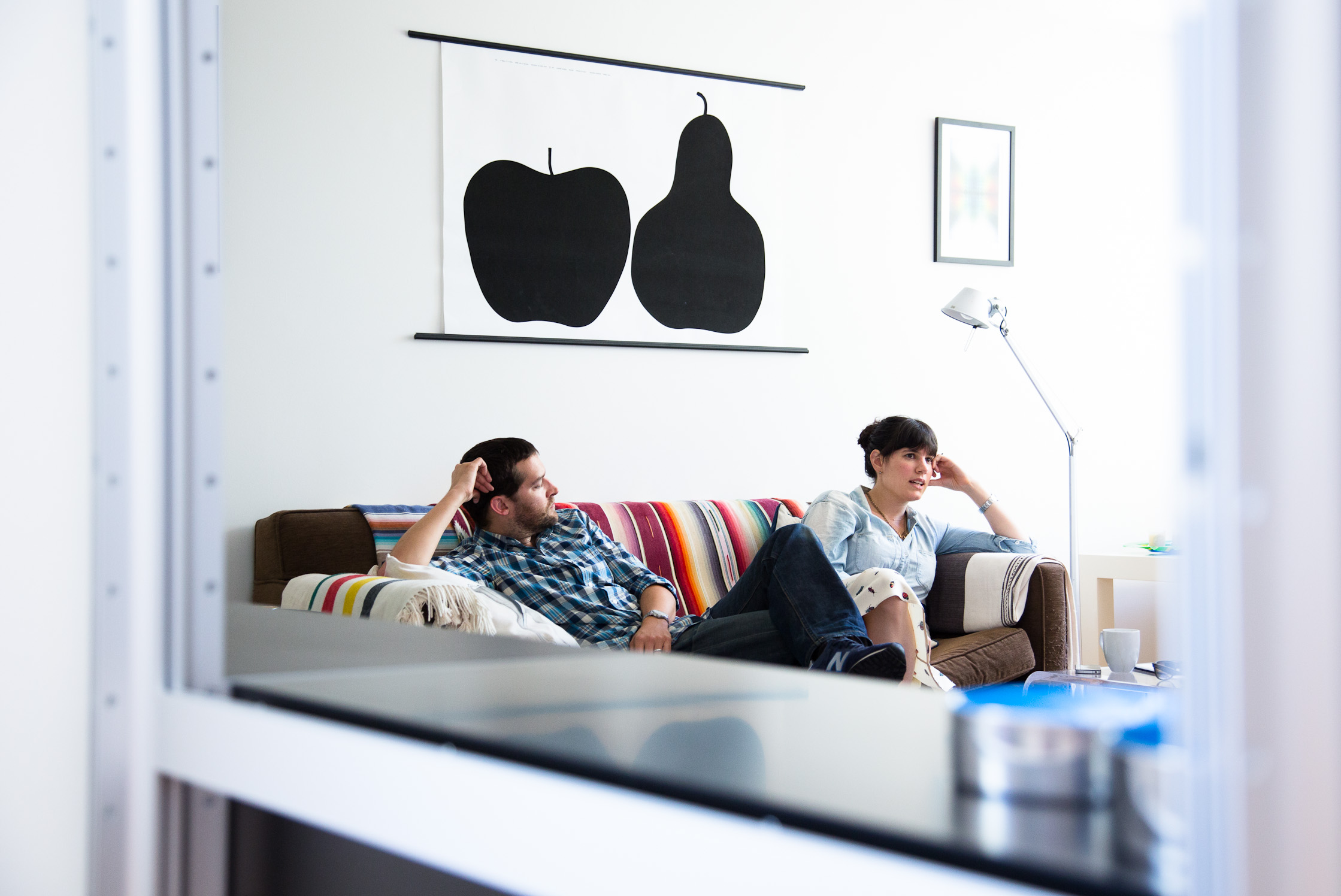
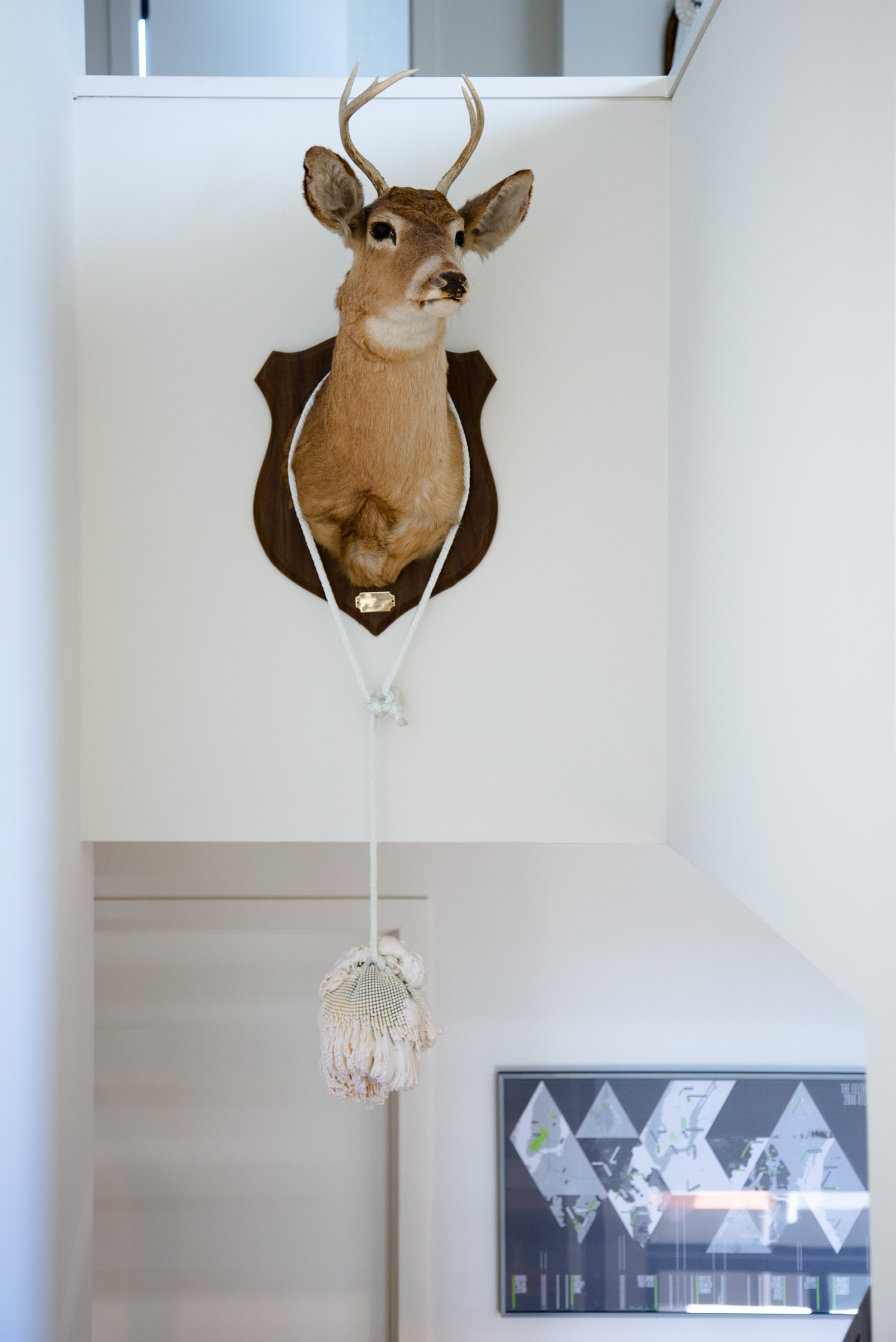
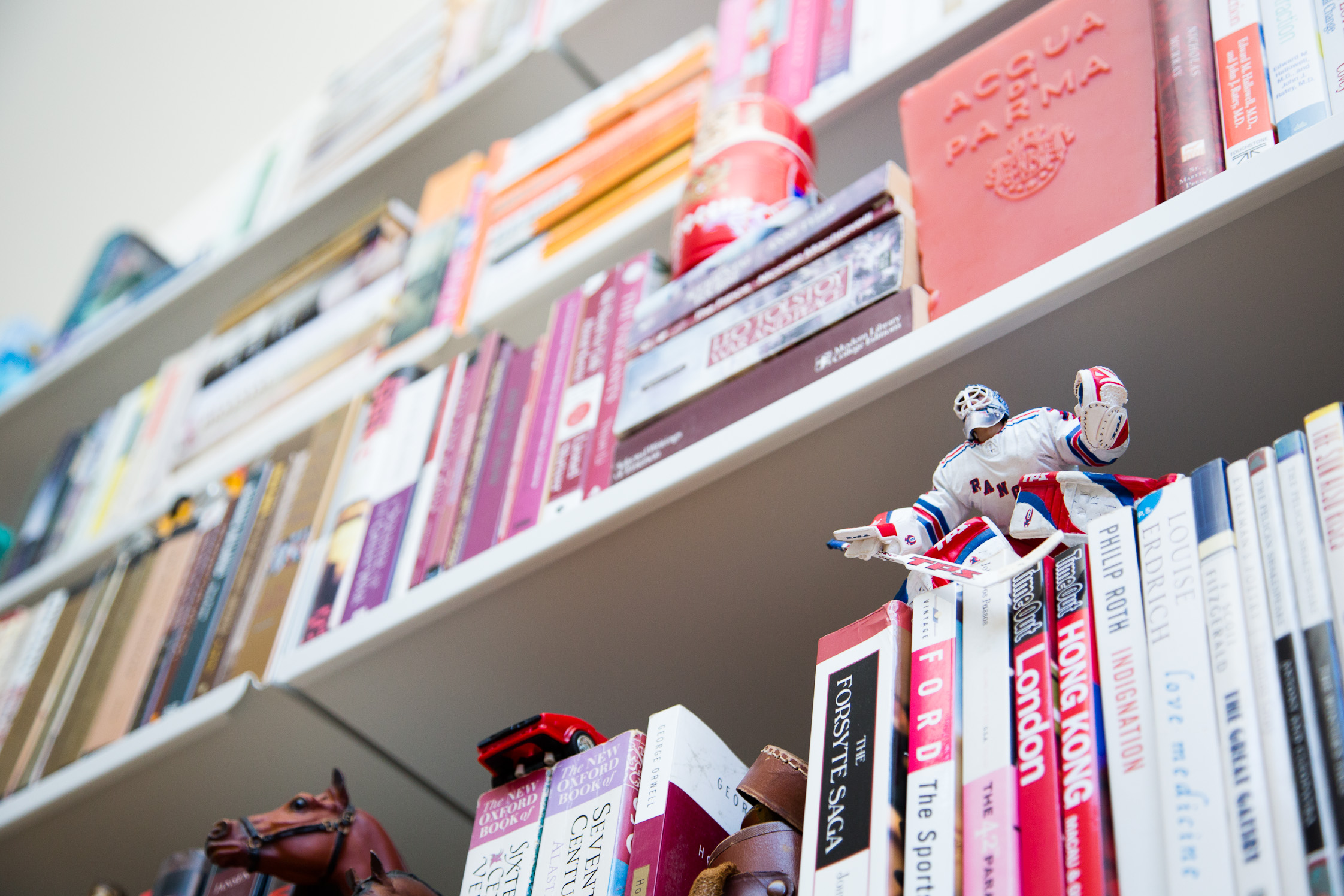
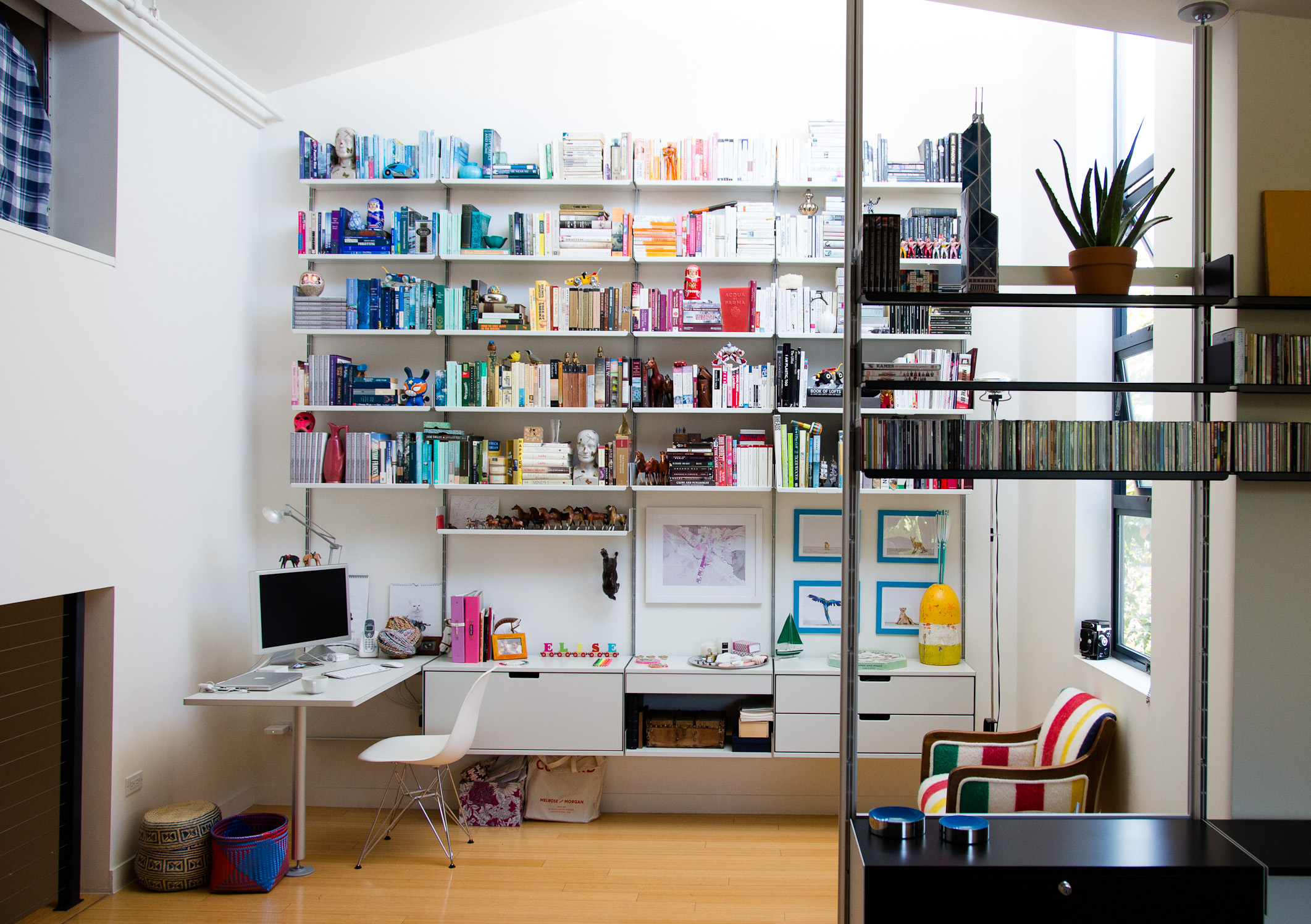
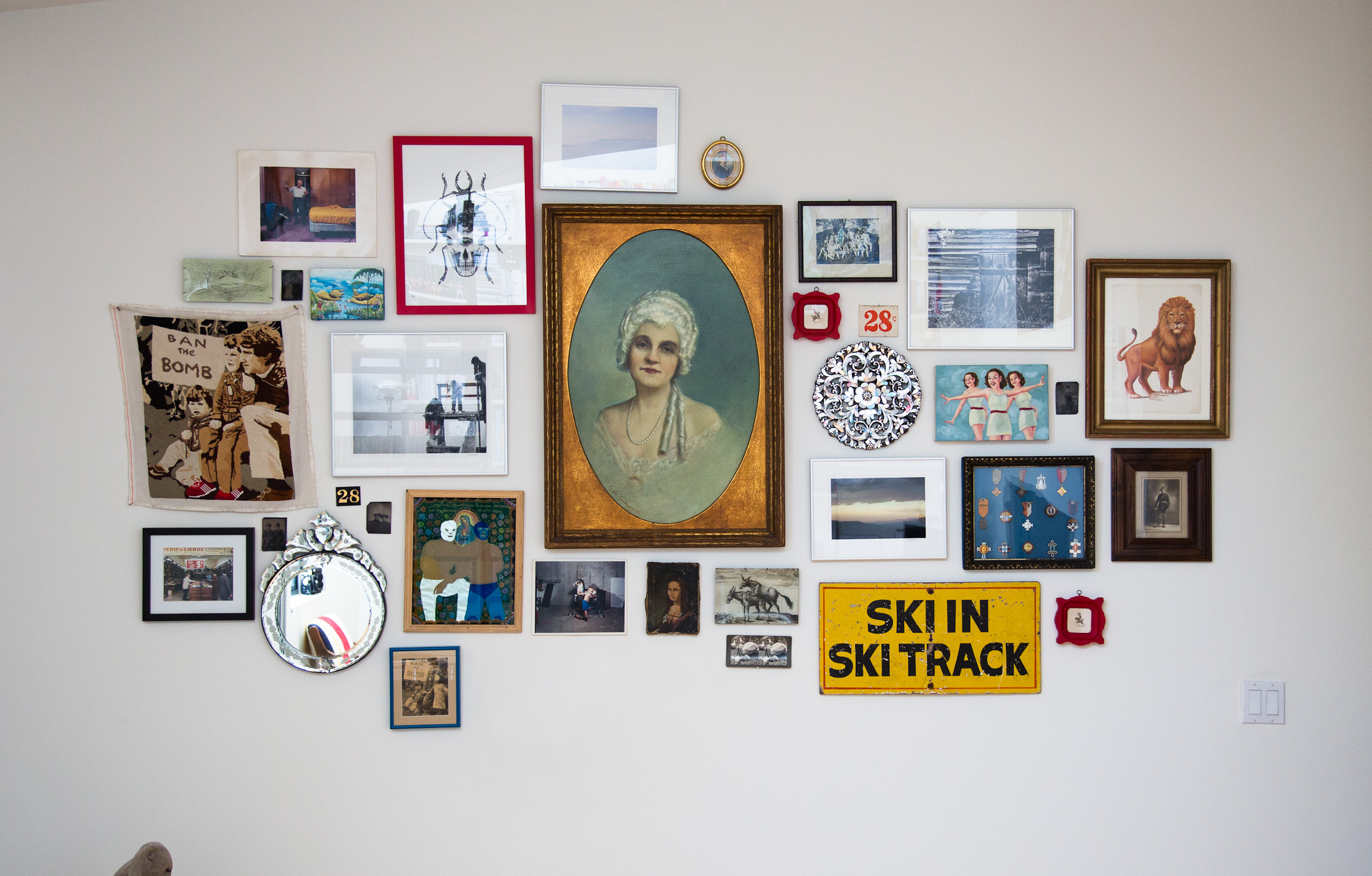
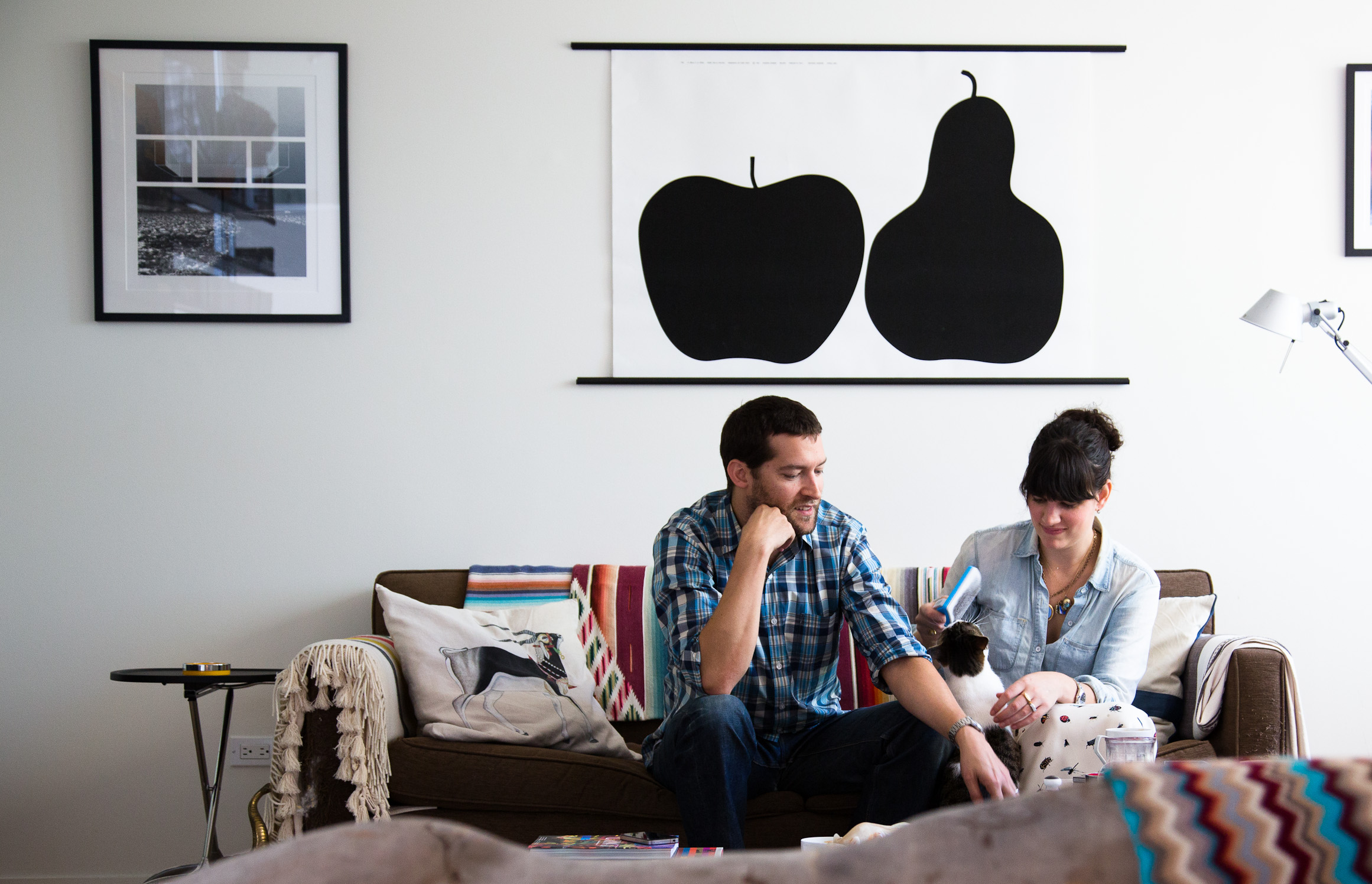
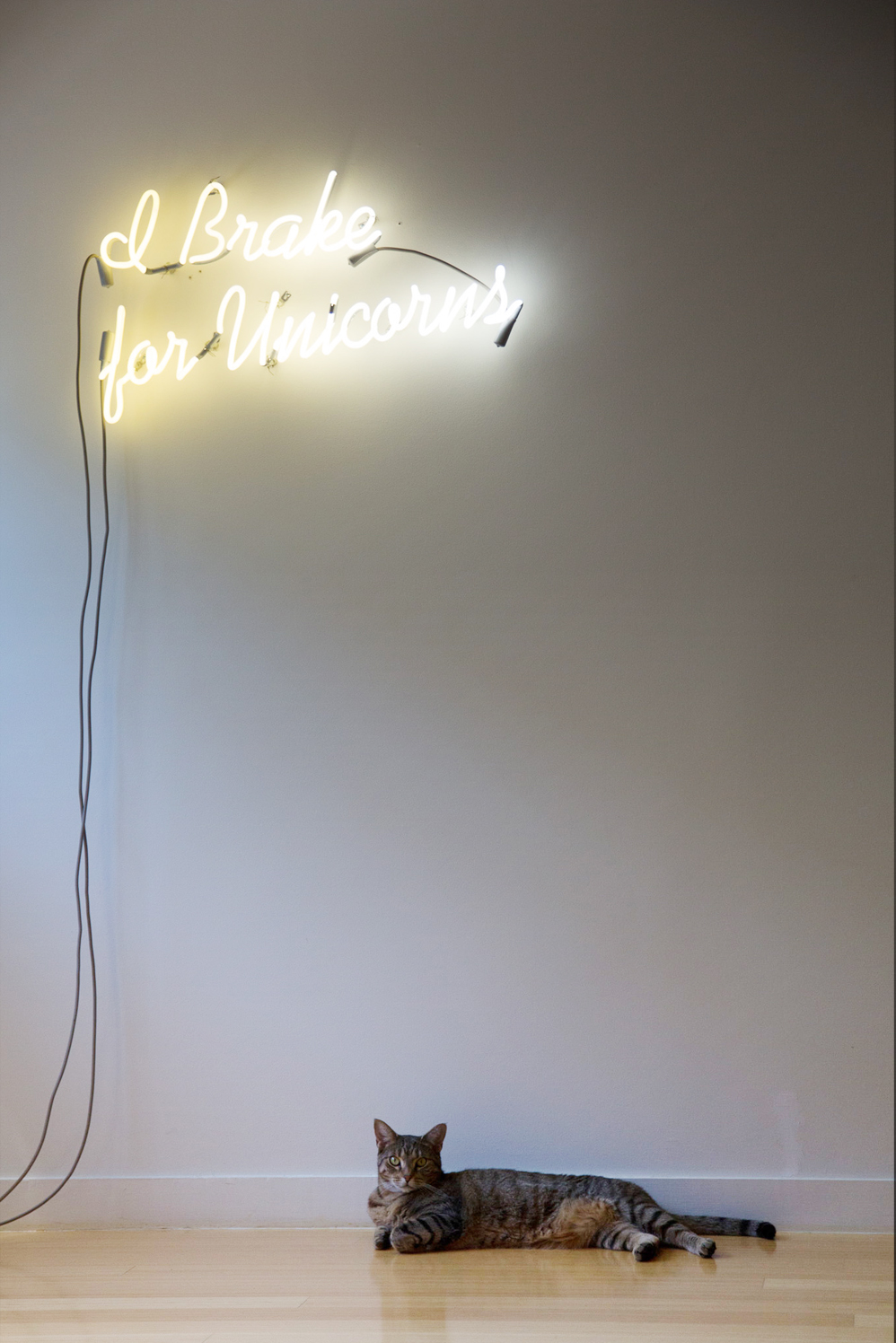
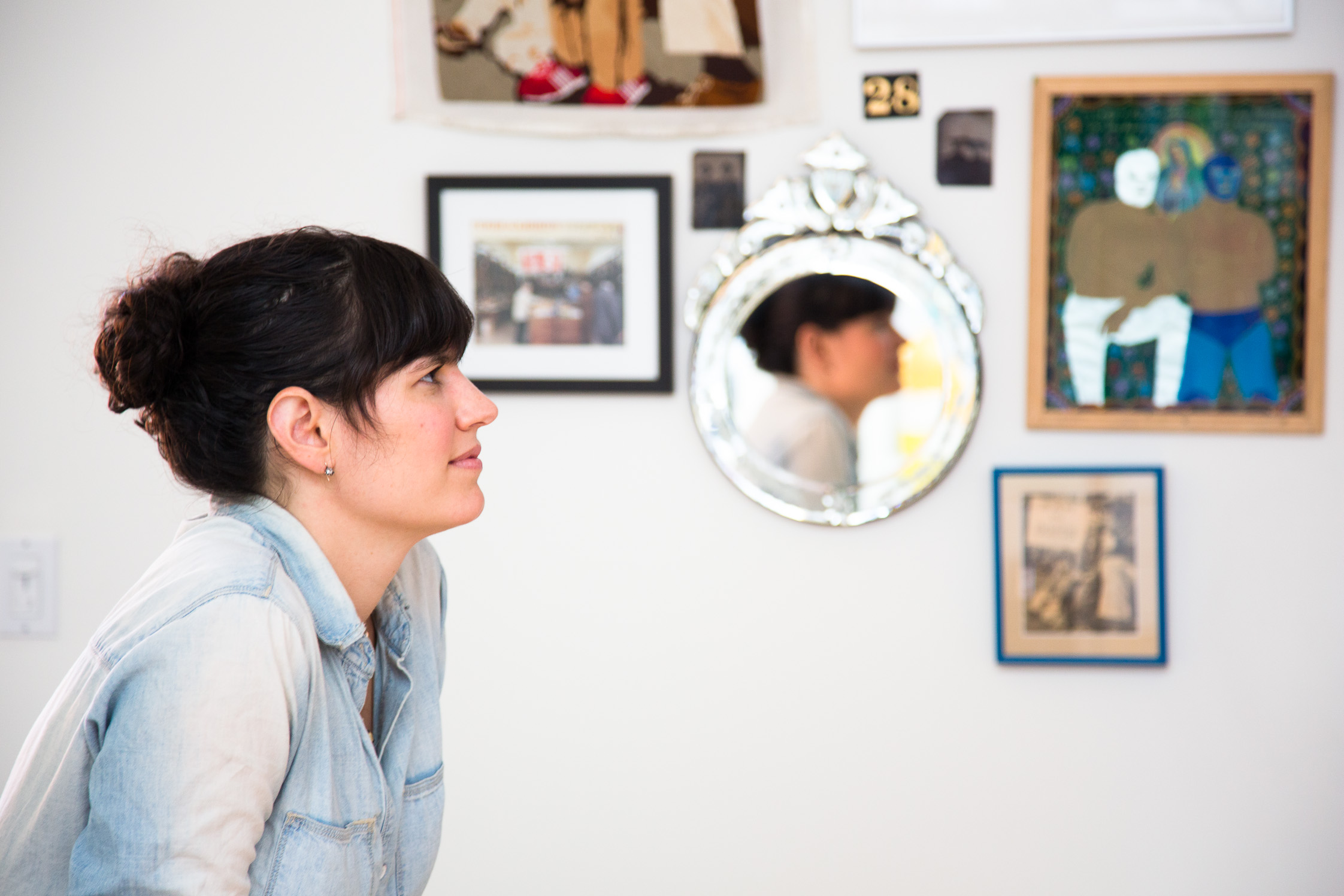
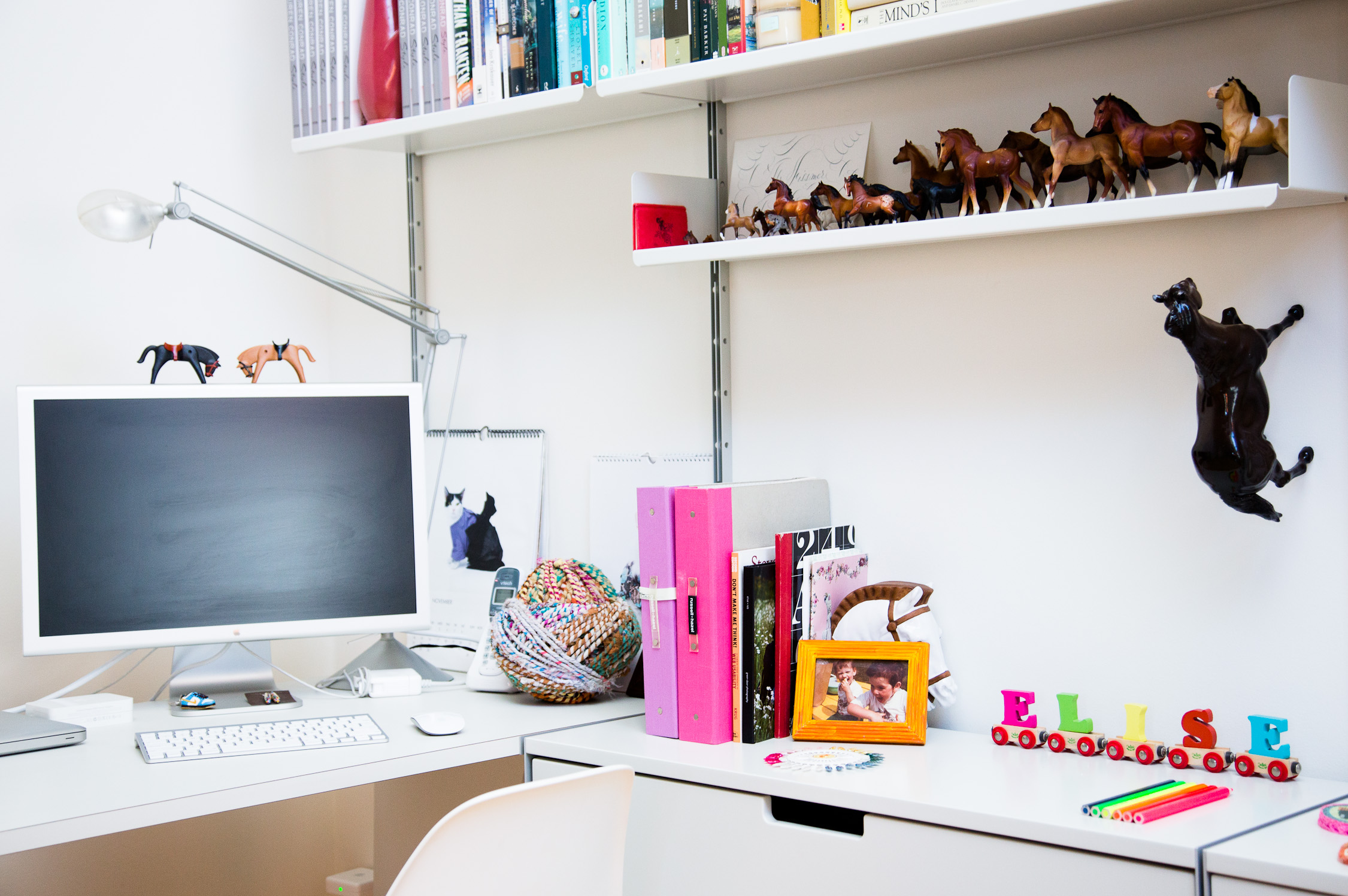
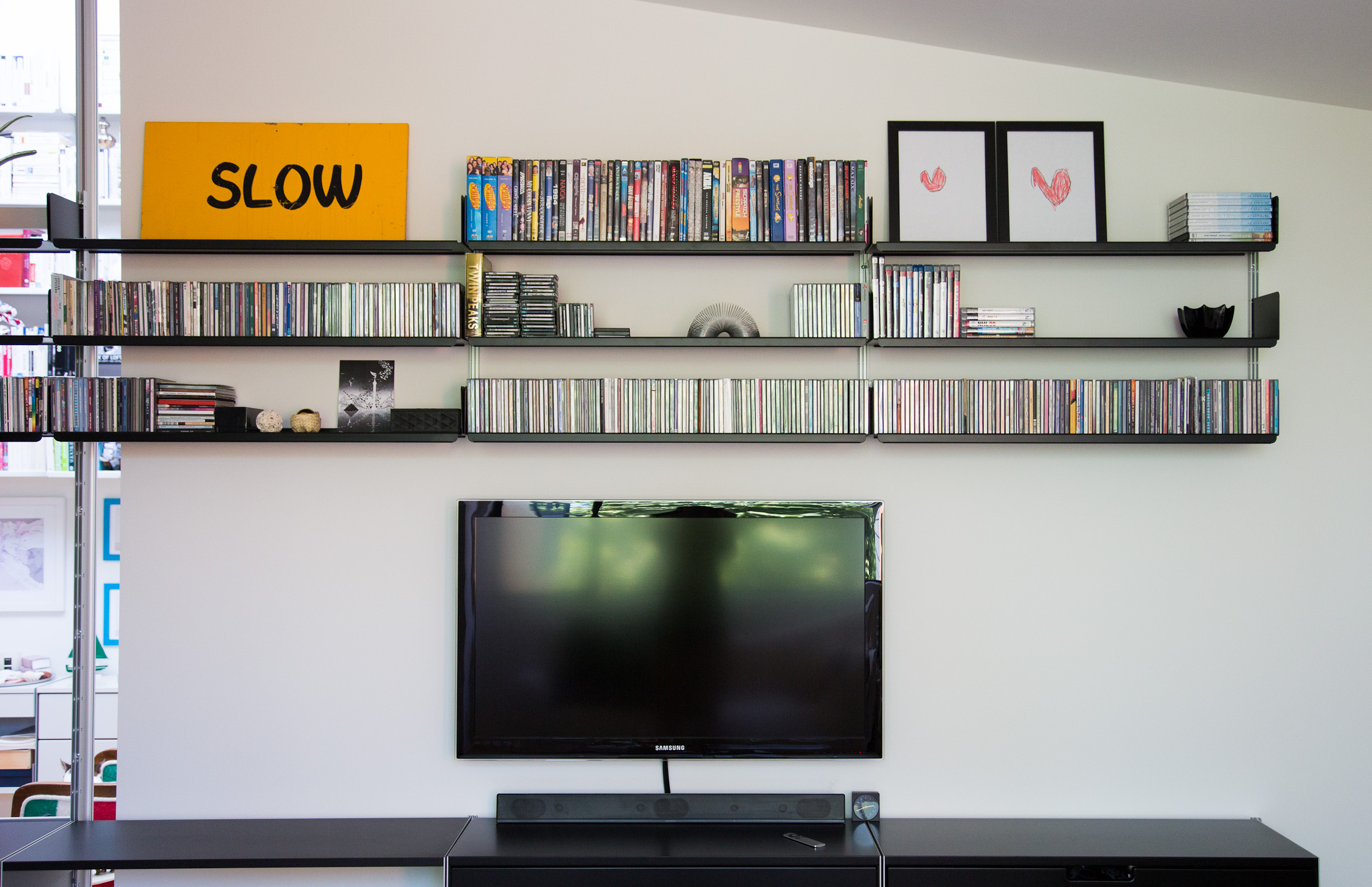
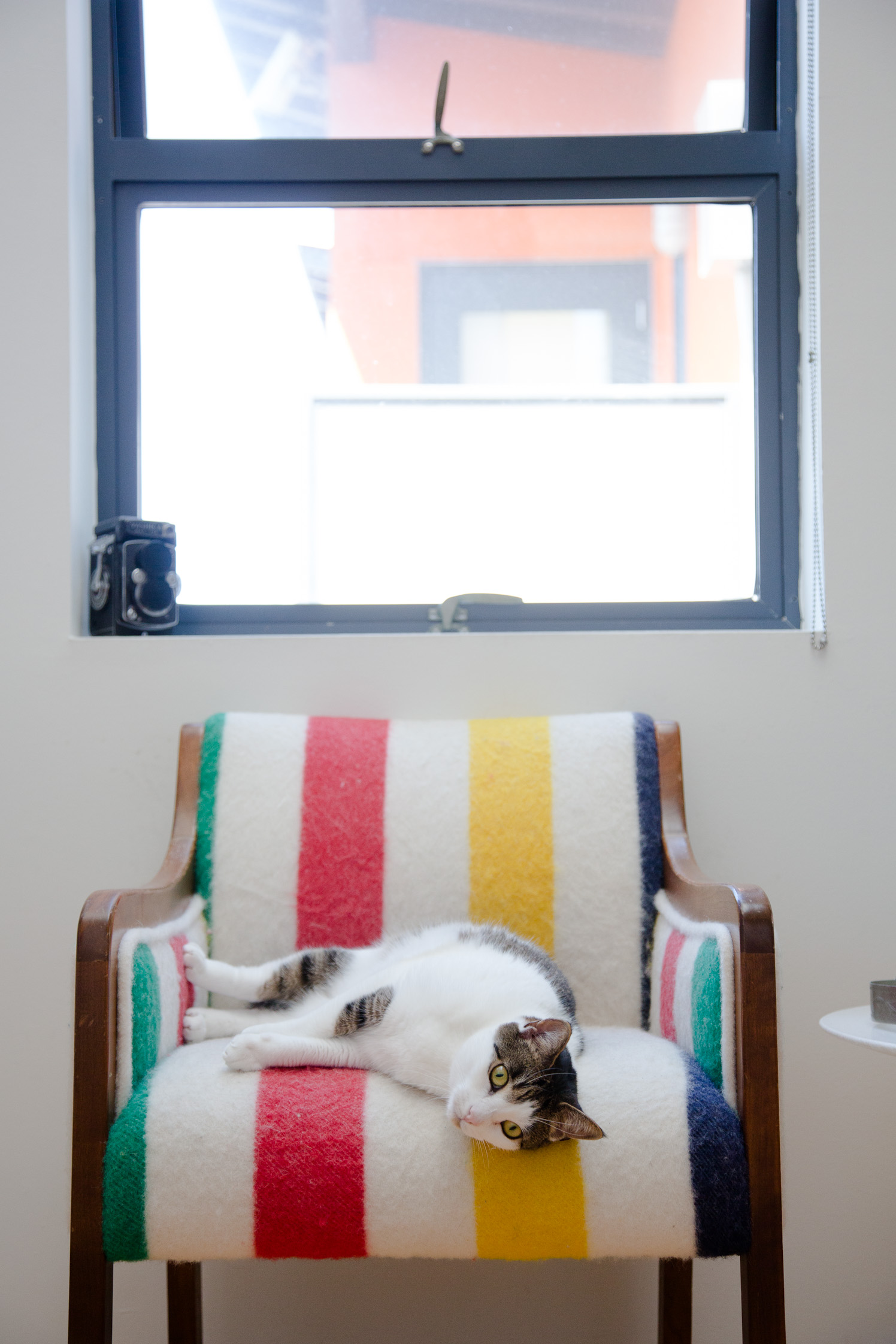
How long have you been in Venice?
Elise: We moved in October, with Rob coming out in November. So I lived here by myself, with nothing in the apartment. The striped chair over there was shipped by Greyhound from Chicago, and that was all the furniture here that month. I would sit in that chair and write the book that I was working on.
Why did you move to this neighborhood?
Elise: We moved to Los Angeles because I was offered a job here, and I wanted to get out of magazines, and learn about the internet. So since I made Rob move, he in turn got to pick where we would live. We also wanted to be close to the Eames studio. There is something about this neighborhood that feels right. Watching all the Eames documentaries, I became totally obsessed with Ray.
Is there a reason you are obsessed with the Eames?
Elise: I mean, let’s get real. In no way are we Charles and Ray Eames (both laughing,) or even remotely like them, but I love how he was a bit more restrained, and she was so exuberant. I love the way that her office was lined with bric-a-brac, and the randomness of the way she would collect things for her pin boards, and her devotion to certain objects. And I love the way in which Charles was concerned with forms, and structure, and she was about the color and the art-direction. I liked the push and pull, the magic that was in that building.
Rob: It’s unfortunate that they haven’t kept it in the family. I think it is just another random film studio. But, besides the Eames studio, I also wanted to live close to the beach, even though I seem to never make use of it.
So this is the west coast showroom for Vitsoe?
Rob: Yes, though technically we don’t call it a showroom, we call it the “Vitsoe apartment.” It’s a by appointment space where people can come see the product in actual use, plan a system with an experienced Vitsoe planner, and ultimately purchase what they have planned.
The apartment refers to the fact that it is being lived in?
Rob: Yes, that it’s fully lived in by us.
Elise: It’s funny, one of the things that we argue about the most is that, for example, today, someone is coming over this evening. And I like to do laundry on the weekends, and Rob will say “you cannot do laundry when people are coming over,” and I’m like, “why not, this is our apartment.” (both laughing)
Does it sometimes prove difficult to live in the apartment that is being open to the public?
Rob: I don’t think so, as I am super compulsive about organizing things, and I am always tidying up, and if anything it’s a good thing for Elise, because it forces her to be on top of her game. (laughing)
Can you tell me about working for MOSS in New York?
Rob: Yes, I worked there from 1999-2006. I was there when it was just a sliver of a space at 146 Greene Street, and then it expanded to 150, and then to 152. So I saw the rise of the empire, and I left before the decline. I was sad to see it close down, because when I was there it was such an important thing for design in America.
Were there any shows specifically that were a particular favorite while you were there?
Rob: I thought the Venini show was really impressive and beautiful. You know I wasn’t as much a fan of the shows, as much as I was a fan of what Murray Moss did in that space, with how Moss was merchandised, and how it was able to highlight certain projects. Also, the shows were fun because I got to dj the events, and I didn’t really have to work as a salesman.
Elise: I miss MOSS. It was just so beautiful, but I think they lost their footing. You have to be able to buy into things. At the stores where I shop, there will always be expensive things that I cannot afford, and things that I can afford. And then in a way, you feel that someday you will be able to buy up to the other things, but I think that MOSS lost their entry point, and it became way too intimidating.
Thinking about it, Dieter Rams is on the other end of the spectrum?
Rob: Yeah, it’s funny, over the course of my time there, I really latched onto Vitsoe as a product, just in terms of its functionality. It’s the one thing there that I really got, and it just felt important to me, and it felt that it was doing something. I sort of became the point person there for Vitsoe. That was the most important thing to me working at MOSS, was that it opened my eyes to Dieter Rams.
Elise: Speaking of Moss and how unattainable it was, I was someone who was desperate for shelving in my apartment in New York. I would call local carpenters, trying to figure out what to do about storage. I never knew about Vitsoe, and it would have never occurred to me that MOSS would have carried something functional that I could afford. I would have been too scared to ask (laughing), because I felt like I would have had a “Pretty Woman” moment in there, and they would have said, “there is nothing in here you can afford”.
Rob, you mentioned earlier you dj, do you have turntables here in the apartment?
Rob: Yes, I do, they are actually downstairs. I don’t have the Technics tables displayed on the system. I’ve actually planned quite a few systems for djs and producers with this system. It’s really a lot of fun to plan that, because I understand it, and I get it. My records are finally on a nice big Vitsoe system. It’s nice after all these years to put vinyl on some shelves that will not eventually bow under the weight, because over the years, I’ve gone through so many systems, that you install, and you put your vinyl on, and then after two years, you have this bowed base. The way the shelves are designed, it’s literally this thin steel, but because of the folds in the front and the back of the shelf, it creates essentially an I-beam of sorts.
You went to school for architecture?
Rob: Yes, I went to Rhode Island School of Design for architecture.
Did you have a desire to build buildings?
Rob: Yes, definitely I had a desire. But then going to work for an architect squashed that desire a little bit. I didn’t enjoy the office environment so much, I felt like this tiny cog, a CAD monkey, and then I just got into smaller scale design, industrial design, selling design, and interior design.
Anything you have a hard time getting rid of in your home?
Elise:I obviously cannot get rid of books; we really like media. I can’t get rid of magazines (laughing). I really love magazines, and we tend to accumulate them. Even though I wanted to learn about the internet, there is something about a magazine that is such a pleasure. It was so fun to work in magazines, and to have the budgets, particularly more than a couple of years ago, to make something beautiful. There is something about the labor of it, and how many people collaborate and work on it, and the amount of times it circulates, getting perfect, before it gets printed. You can also make beautiful digital things, obviously, that only one person creates. Somebody the other day asked me about our fact checkers at Beso where I work, and I said “fact checkers?…I wish.”
Do you think there is a danger in the online quickness that happens?
Elise: Absolutely, but I think that if you aren’t reporting earth shattering news, and it’s lifestyle, then I think that it’s ok. I mean I can go on and on about bloggers, and what it means to be a journalist.
What does it mean to be a journalist?
Elise: People would say that I am not a journalist, as I have never reported hard news, and I’ve always worked for taste-based publications, with subjective points of view. I was at Lucky magazine for a million years, and then at Condé Nast Traveler. At Lucky I would write these guides to shopping different cities around the world. You couldn’t buy your way into a guide, and I think most editors are not buyable. It was never “pay for play.” I would go and shop these cities, and shop at all the stores, and I would shop like a normal, anonymous person. It felt really important to me that I wasn’t given special treatment. I think a lot of bloggers, particularly in fashion, beauty and style, are about pay for play, and how can you trust that? How am I supposed to know if you think something is good, if you didn’t even pay for it? So in that sense, I think it’s important to believe in what you are pushing, and to think it’s worth its sticker price. But, I do love blogs, and it’s amazing how many original voices there are that are part of the conversation now, because it was always such a rarefied world. I never really thought I could get a job at a magazine—I’m not even sure how I was able to talk my way into that building! (laughing) But the job did feel like an honor, and I felt a real responsibility to do it thoroughly and well… and as an editor, to know that you have seen everything, so that you are actually editing comprehensively.
Any favorite sites that you read?
Elise: For fashion, I love Miss Moss, and another site called Bleach Black. I’ve always found the two at Bleach Black to be really original. Occasionally you will see a photo of them on their blog, but it’s not an outfit blog, and their D.I.Y. projects are cool, and weird. I mean there are so many voices out there now, but many of them are kind of the same. And Miss Moss has really great taste, and finds beautiful obscure labels. I still write a column for Lucky, and she has pointed me to different stores and web shops that I might have not otherwise known about.
Rob: I read a lot of music blogs and design blogs. Probably my favorite is Iso50, a multi-disciplinary blog that covers graphic design, industrial design, music. The other one I’ve been reading lately is YSK: You’ll Soon Know, he’s a producer and beat blogger that posts primarily about underground producers from around the all world.
Thank you very much for letting us into your home and showing us around your LA neighbourhood.
You can go here and take a look at Rob’s work. Elise’s official website with all of her journalistic works can be found here.
Photography: Zen Sekizawa
Text: David John
